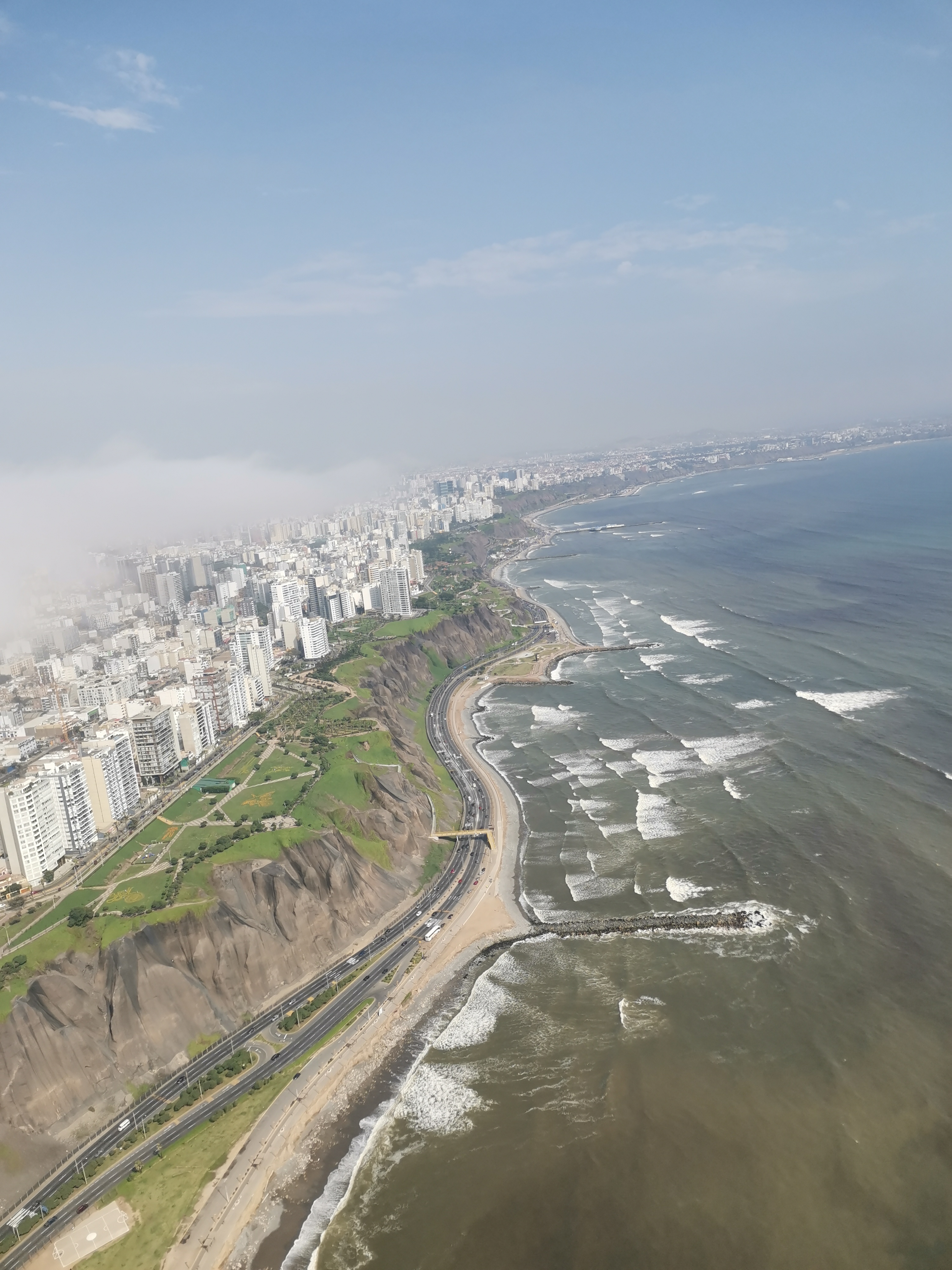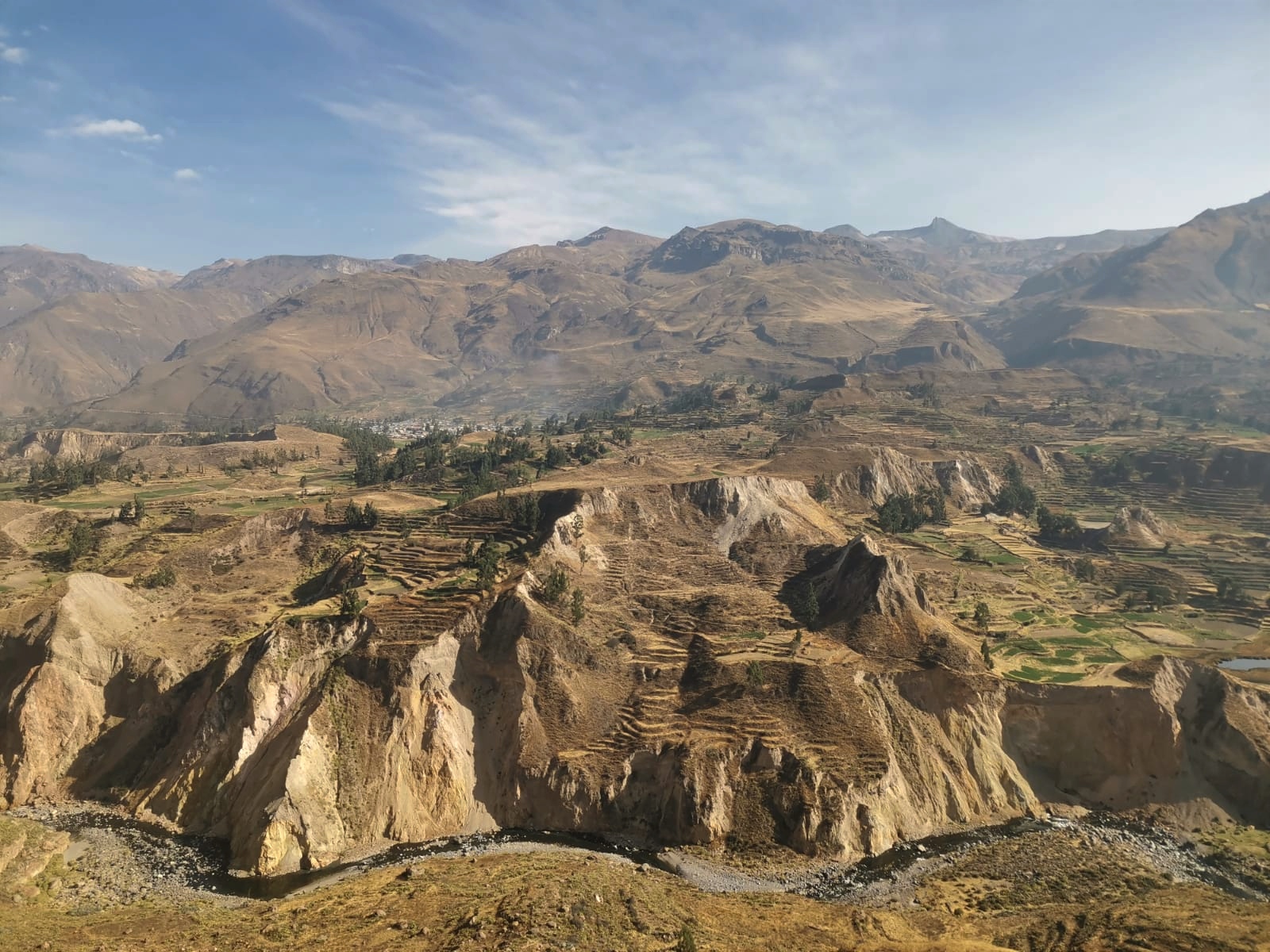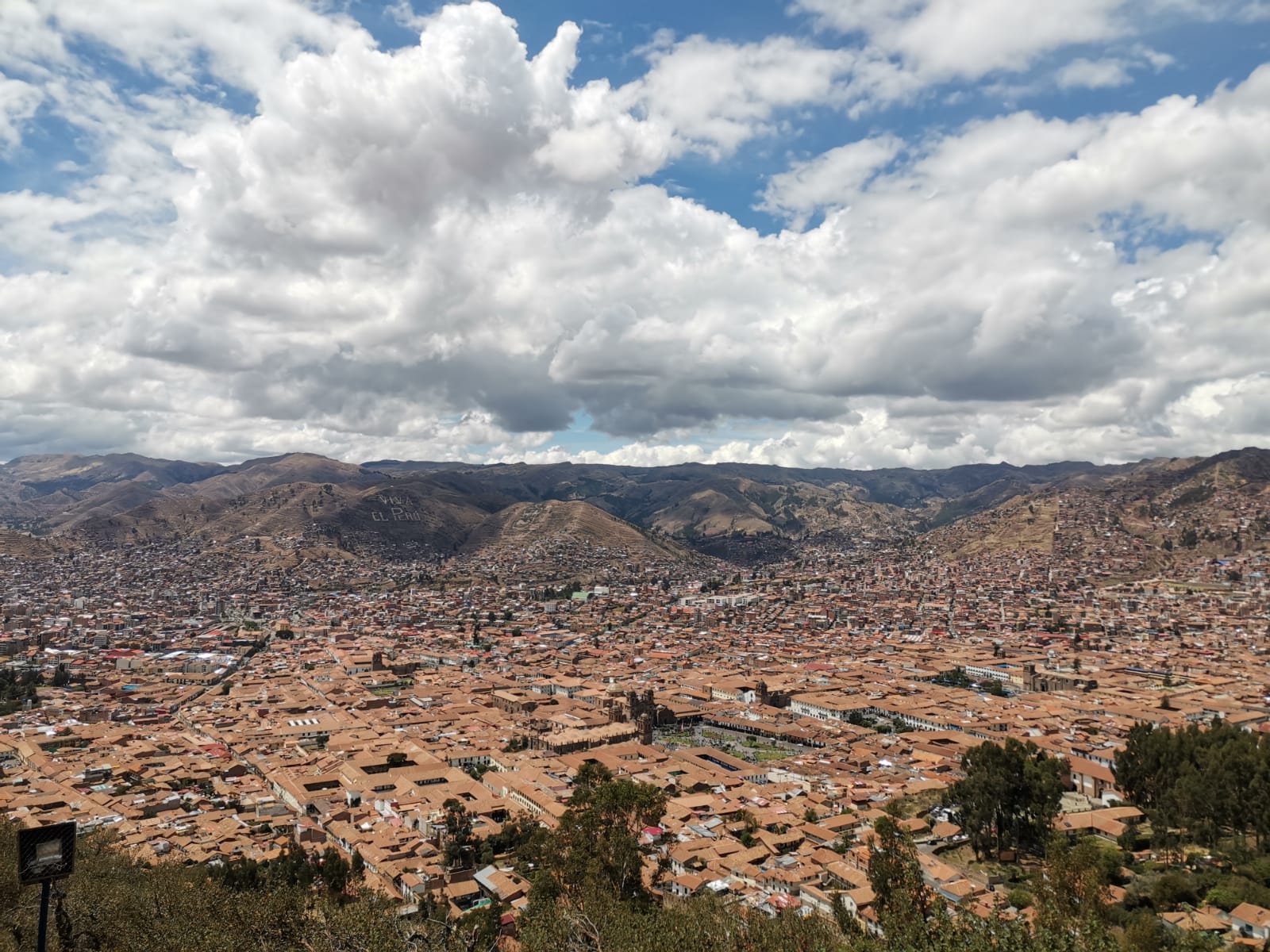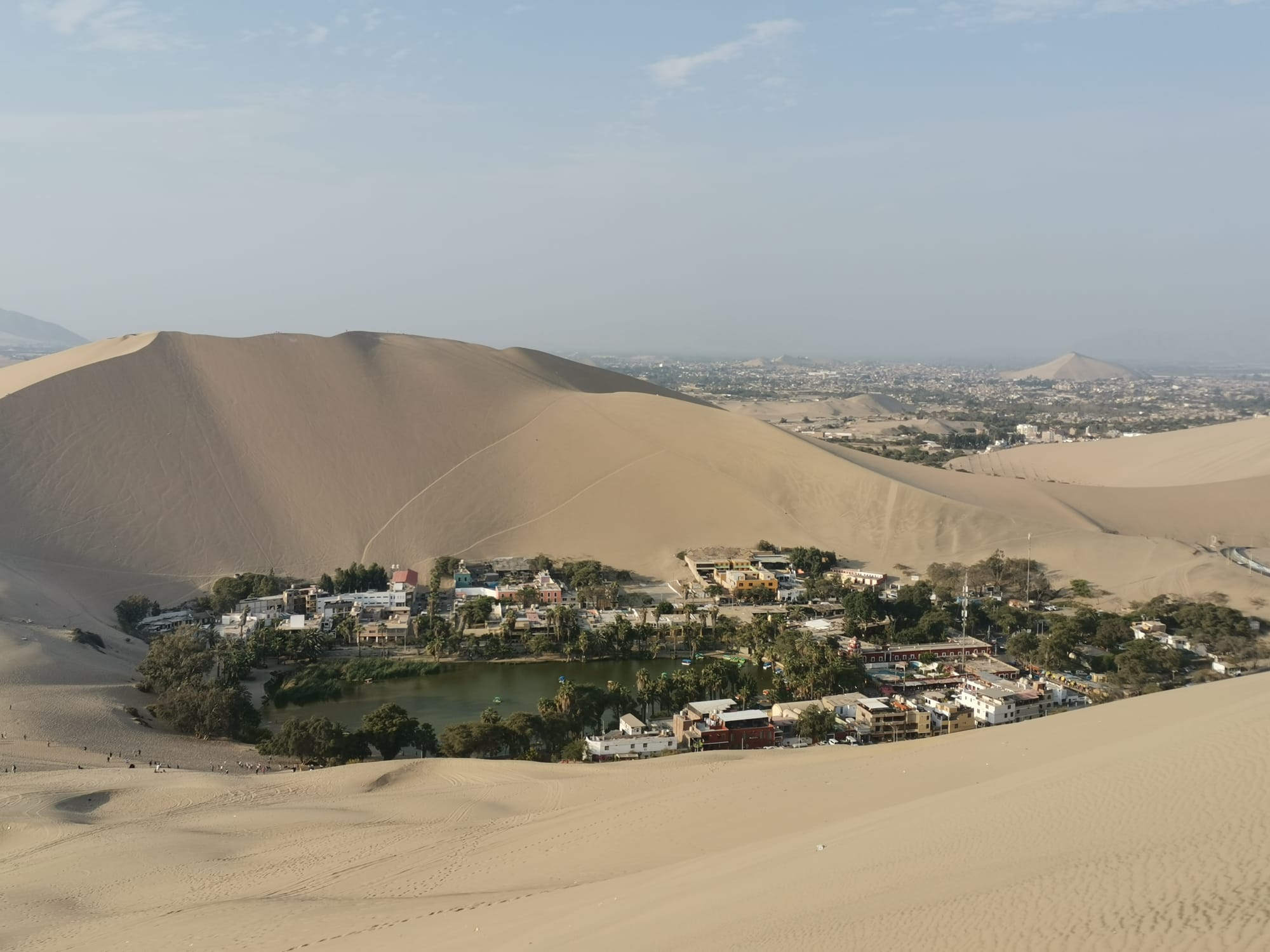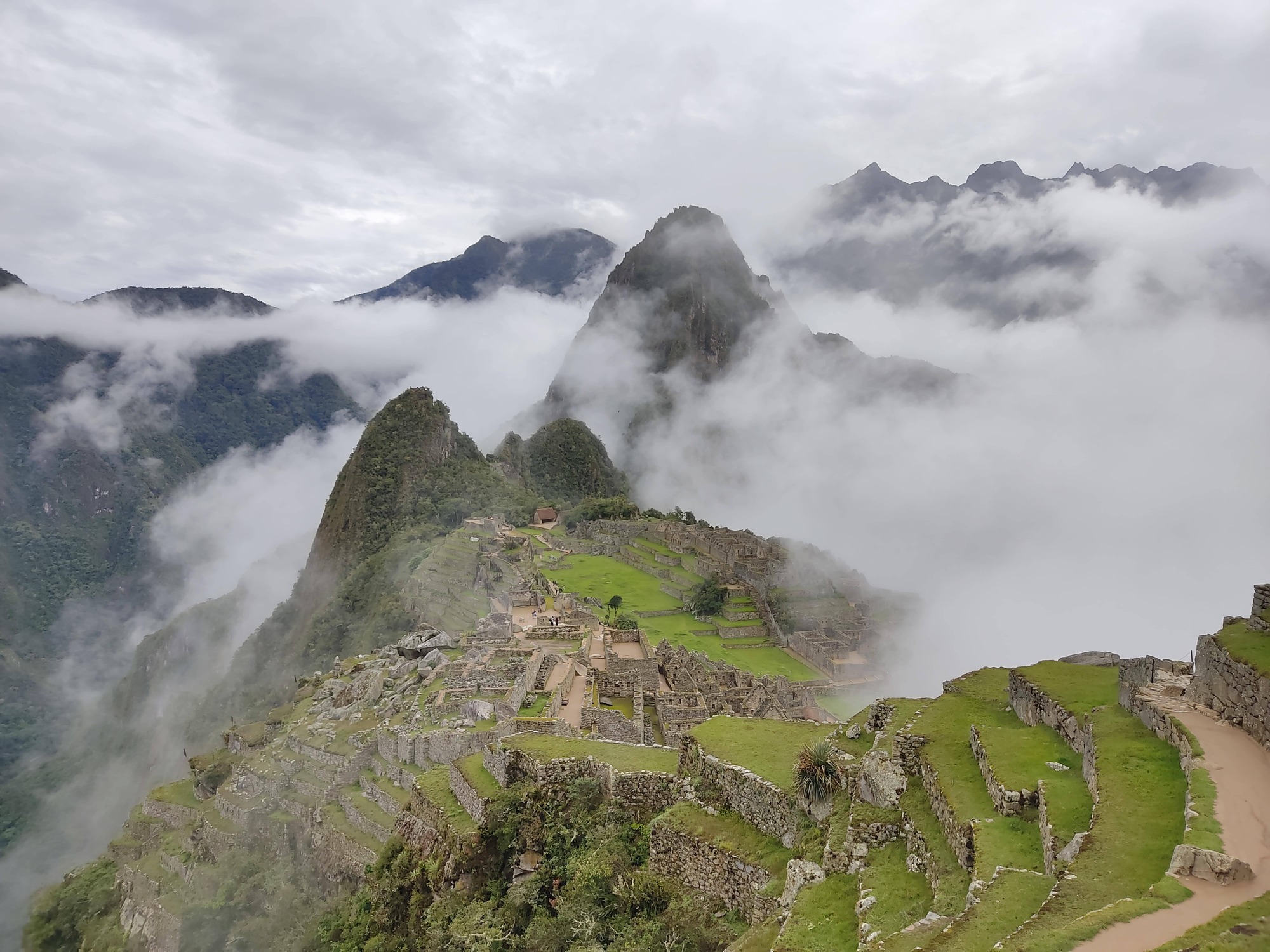Introduction
After spending 4 days in Lima, we were ready to see what else Peru had to offer. By far, the most popular destination in Peru is Cusco city. As the starting point for the Inca trail trek to Machu PicchuInca Trail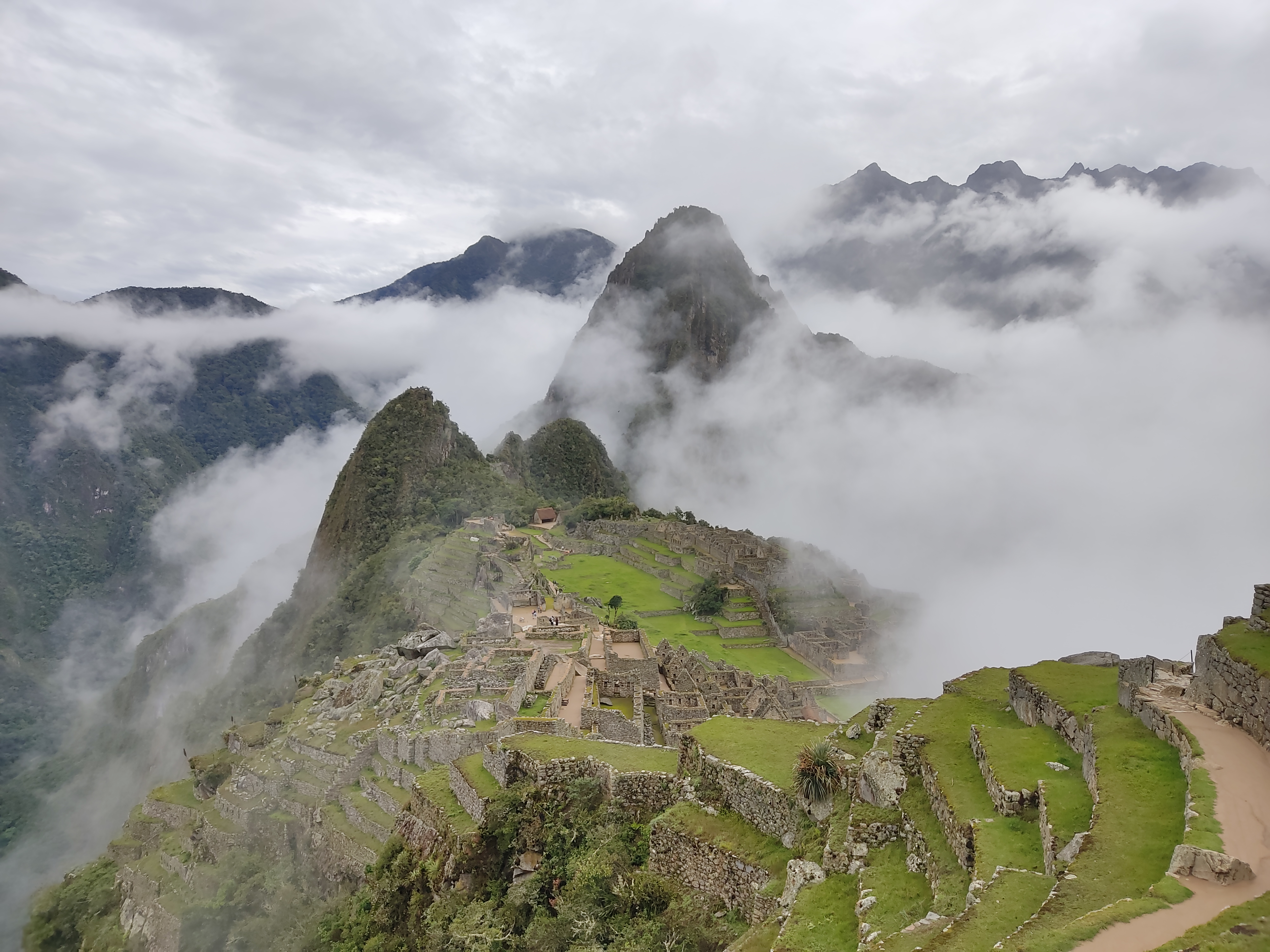 The Inca trail is a popular 4-day trek, ending at the archaeological site of Machu Picchu. Click to read more about our time hiking the Inca trail., as well as several other outstanding attractionsTop attractions around Cusco:
The Inca trail is a popular 4-day trek, ending at the archaeological site of Machu Picchu. Click to read more about our time hiking the Inca trail., as well as several other outstanding attractionsTop attractions around Cusco:
Rainbow Mountain
Humantay Lake
The Sacred Valley in the area, so other areas often get overlooked.
Generally, people fly directly to Cusco from Lima, since it is the quickest option. We were lucky enough to have 21 days between landing in Lima and the start of our booked Inca trail, so we spent the next 2 weeks exploring southern Peru. We found there is a lot more to Peru than just Cusco!
Paracas
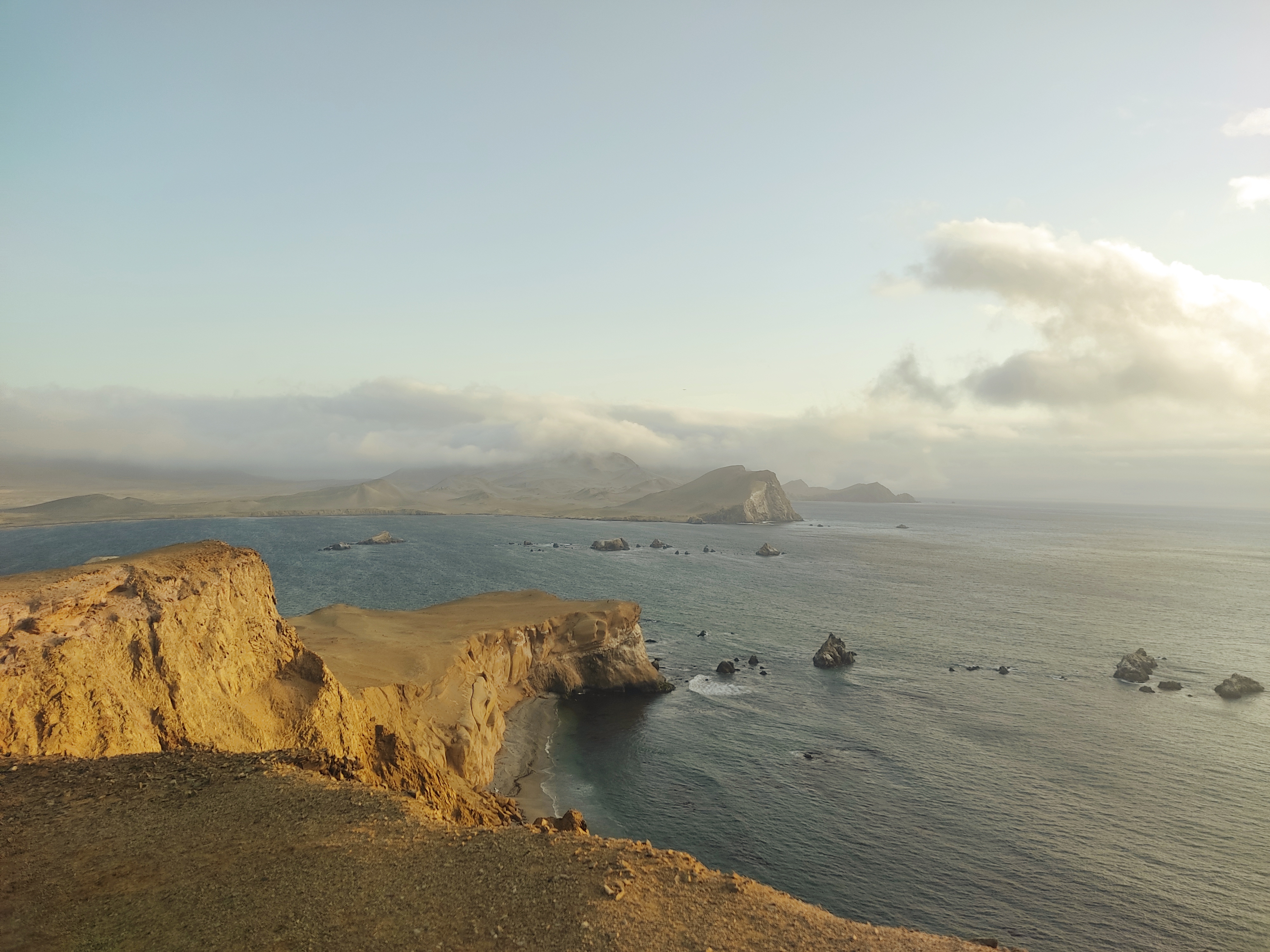
Approximately 2 hours from Lima is the small town of Paracas, the first logical place to stop off on the road south. Paracas is home to two tourist locations: the Ballestas islands and the Paracas national reserve. These places are full of marine wildlife, prodominantly sea-birds and sea-lions, as well as occasional dolphins and penguins, and are a good chance to get out in nature after visiting the metropolis of Lima.
Paracas consists of just one main street (plus a few sandy side-streets), and could not be more different to Lima. Although there were very few touristsWe didn't realise just how touristy some parts of Peru would be, and when we arrived to Paracas, we were very glad we had spent some time in Lima because it gave us the chance to see more of the Peruvian day-to-day life. in Lima, Paracas was full of travellers, and every building on the main street was either a hostel, restaurant, shop, or travel agency. In some ways, Paracas felt a bit like a resort, with hot weather and a popular beach to relax on.
The first afternoon we arrived, we went on a 'golden shadows' sunset trek through the national reserve. The landscape was truly special, at the boundary between the desert and the sea. With red rocky hills and sandy plateaus. It felt a bit like being on the surface of Mars (not that we really know what that is like), and the striking cliffs and coastline were perfectly illuminated by the setting sun. In the evenings, the wind picks up, sending sand swirling over the rocks, creating a cold and somewhat hostile environment.
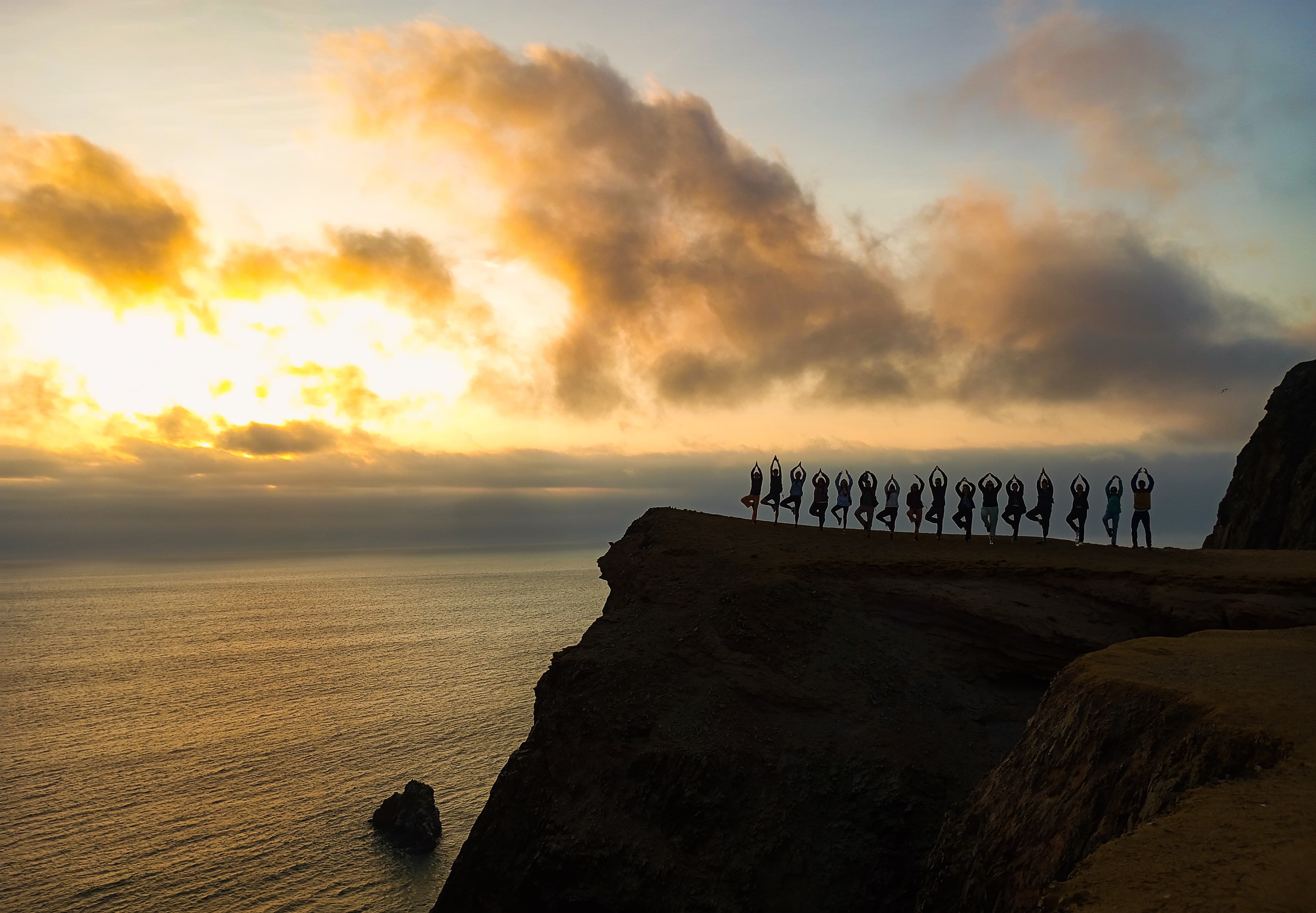
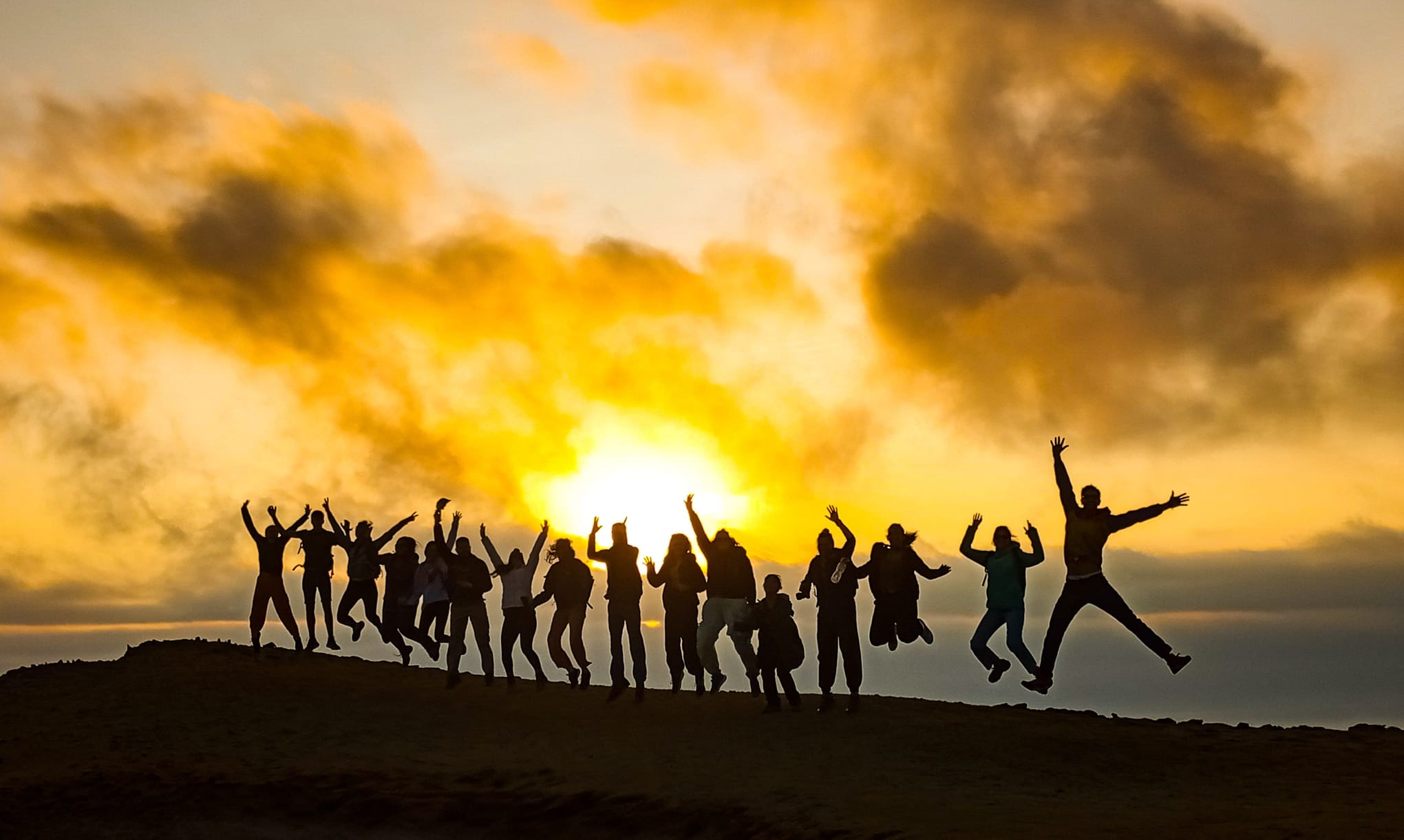
We must have been the only toursists in Paracas that did not visit its number one attraction, the Ballestas islands. Since we had already visited the Palominos islandsPalominos Islands 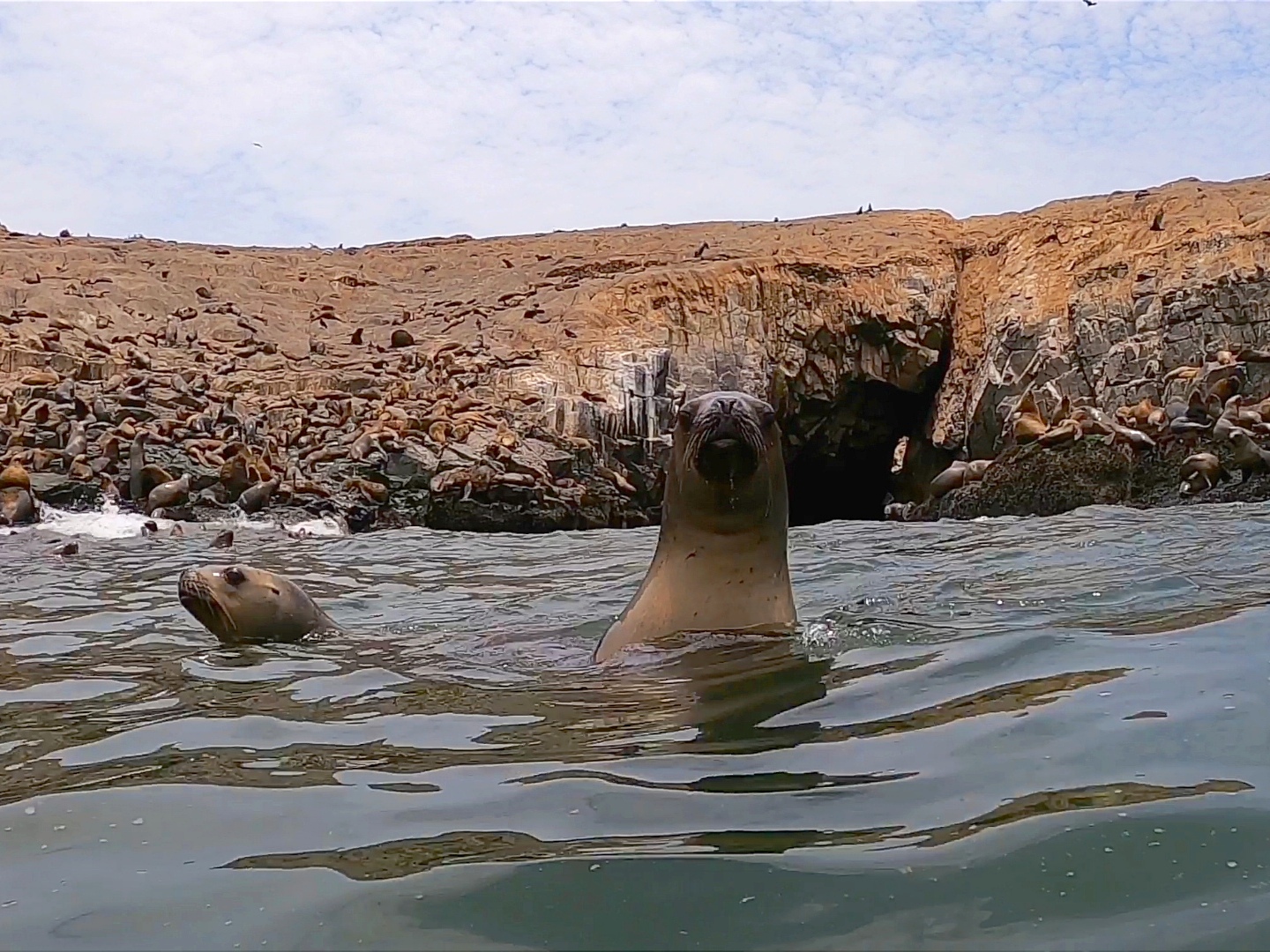 The Palominos Islands can be found just off the coast of Lima, and are one of the best things to see in Peru's capital. Here, you have the chance to spot penguins and swim with sea-lions. To read more, click here in Lima, which offer a similar experience (plus you are actually allowed to swim with the sea-lions), we decided to spend the whole day in the national reserve instead. Although we heard that the islands were good, sitting on a boat trying to spot sea-lions from afar didn't seem like the best way to spend our time here.
The Palominos Islands can be found just off the coast of Lima, and are one of the best things to see in Peru's capital. Here, you have the chance to spot penguins and swim with sea-lions. To read more, click here in Lima, which offer a similar experience (plus you are actually allowed to swim with the sea-lions), we decided to spend the whole day in the national reserve instead. Although we heard that the islands were good, sitting on a boat trying to spot sea-lions from afar didn't seem like the best way to spend our time here.
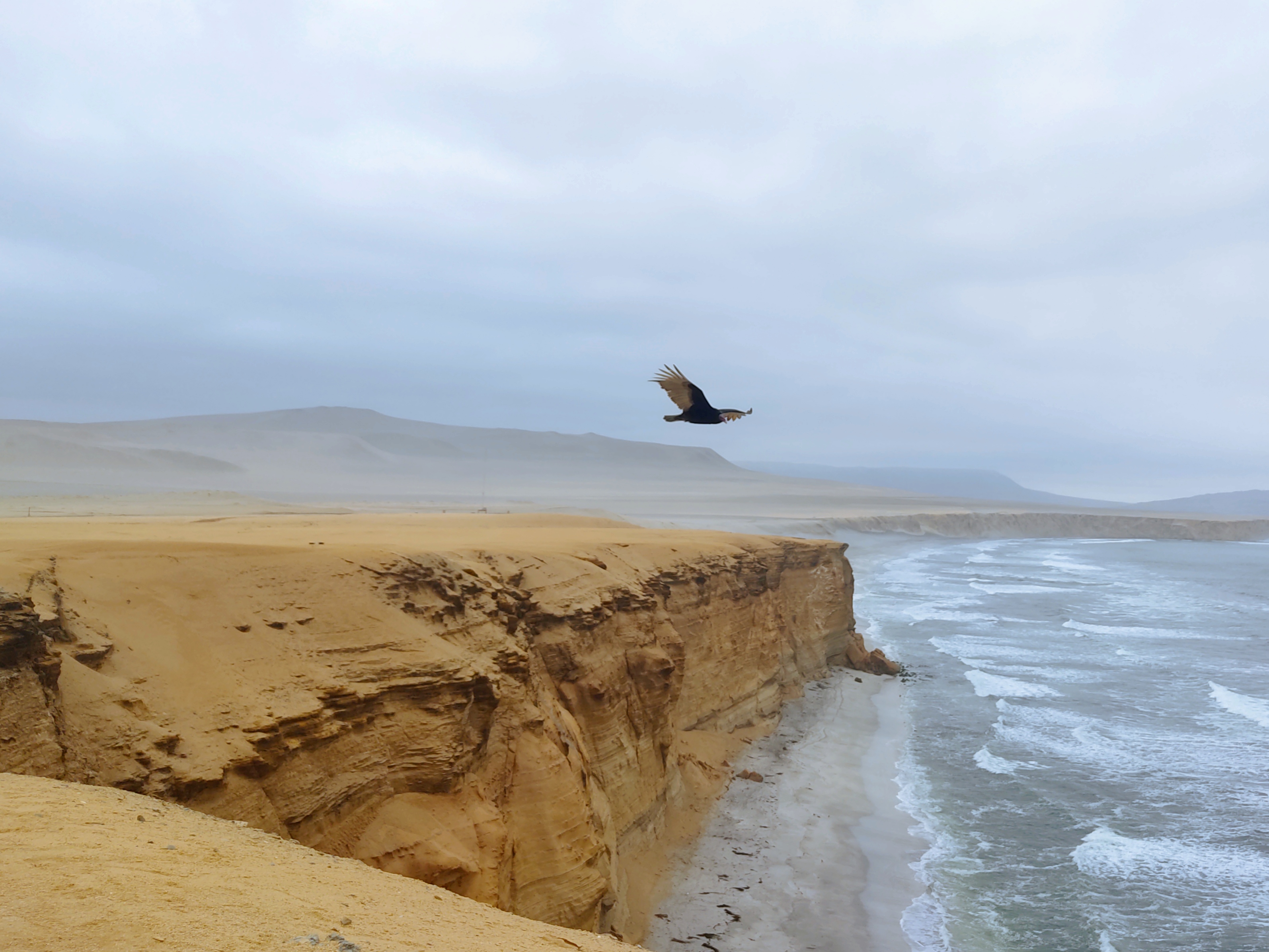
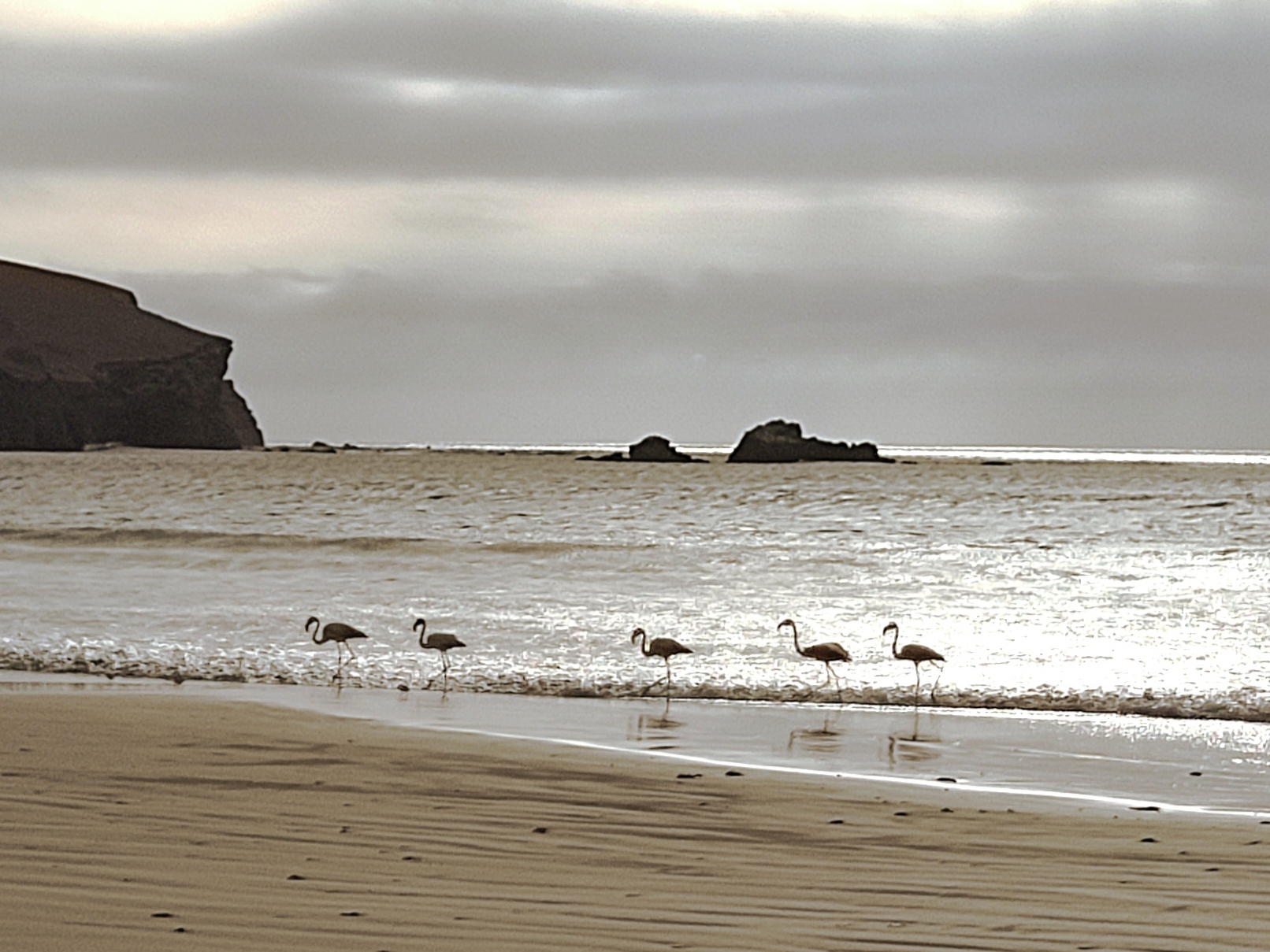
Although there is no shortage of toursEveryone in Paracas is trying to offer you tours of the reserve, either by bus, 4x4, or car. through the reserve, we decided to rent bicyclesHow to rent a bike in Paracas:
Cycling the ~40km loop in the desert is not as hard as it sounds! The overcast mornings and strong sea breeze mean the heat is managable, although cycling against the wind is very tough! We went to the travel agency opposite our hostel the night before, and arranged to pick up bikes the next day. We paid 25 soles (~£5.50) per bike, and also got helmets, a map, and a repair kit. If you plan on swimming at the beaches, make sure to ask for a lock ('candado' in Spanish)! Some blogs online suggest leaving as early as 7am, but we started at 9am and made it back by 4pm. The wind blows from the West, so we suggest doing the loop in the clockwise direction. This means the wind will push you home, and the hard work is out of the way first. and visit by ourselves. Renting a bike was the cheapest and best way to visit, and allowed us to explore the vast reserve in the morning, before the hoards of tour-buses arrived in the afternoon. Cycling through the peaceful emptiness at our own pace allowed us to truly appreciate the vast and barren landscapes, and gave us more time to enjoy the places that we felt were the most impressive. Regardless of whether you take a tour or go independently, there are several places to stop and enjoy the views in the reserve, including a few beaches which are perfect for cooling off after a day in the desert!

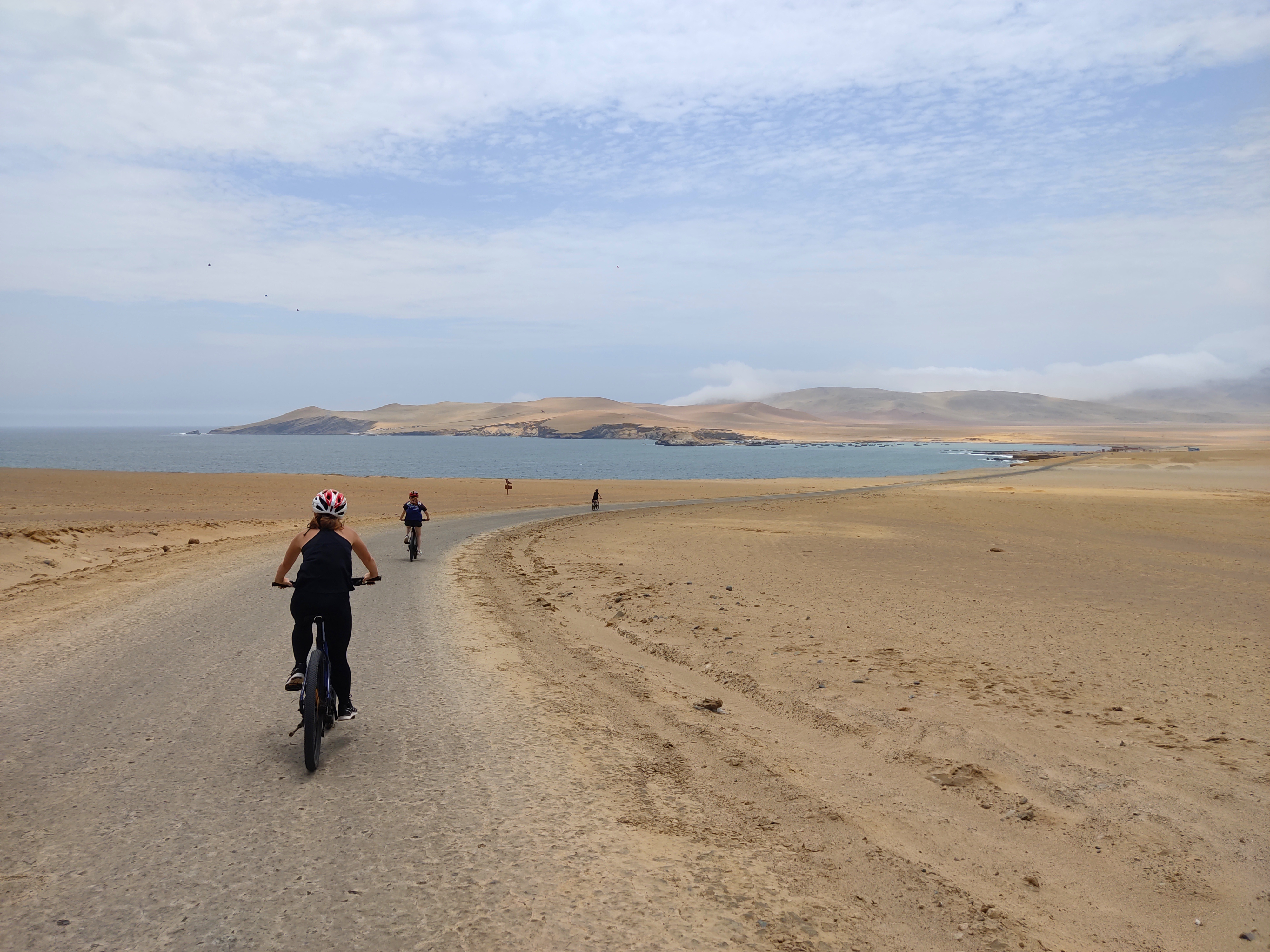
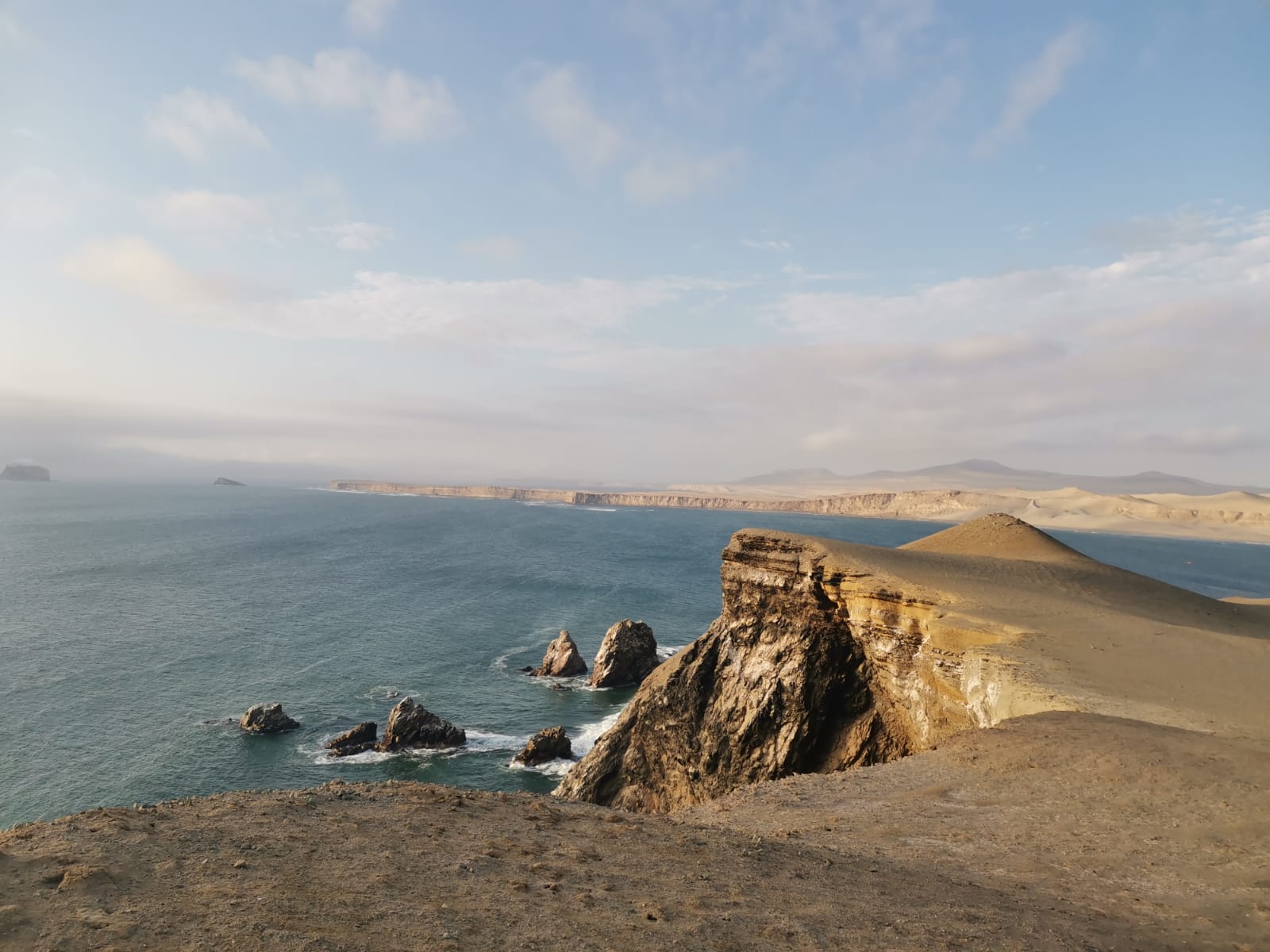
Overall, spending a couple of nights in the slightly overcrowded town is well worth it, to allow you to escape to the Paracas national reserve. The vast landscapes and coastal wildlife are a must see, before heading into the mountains.
Huacachina
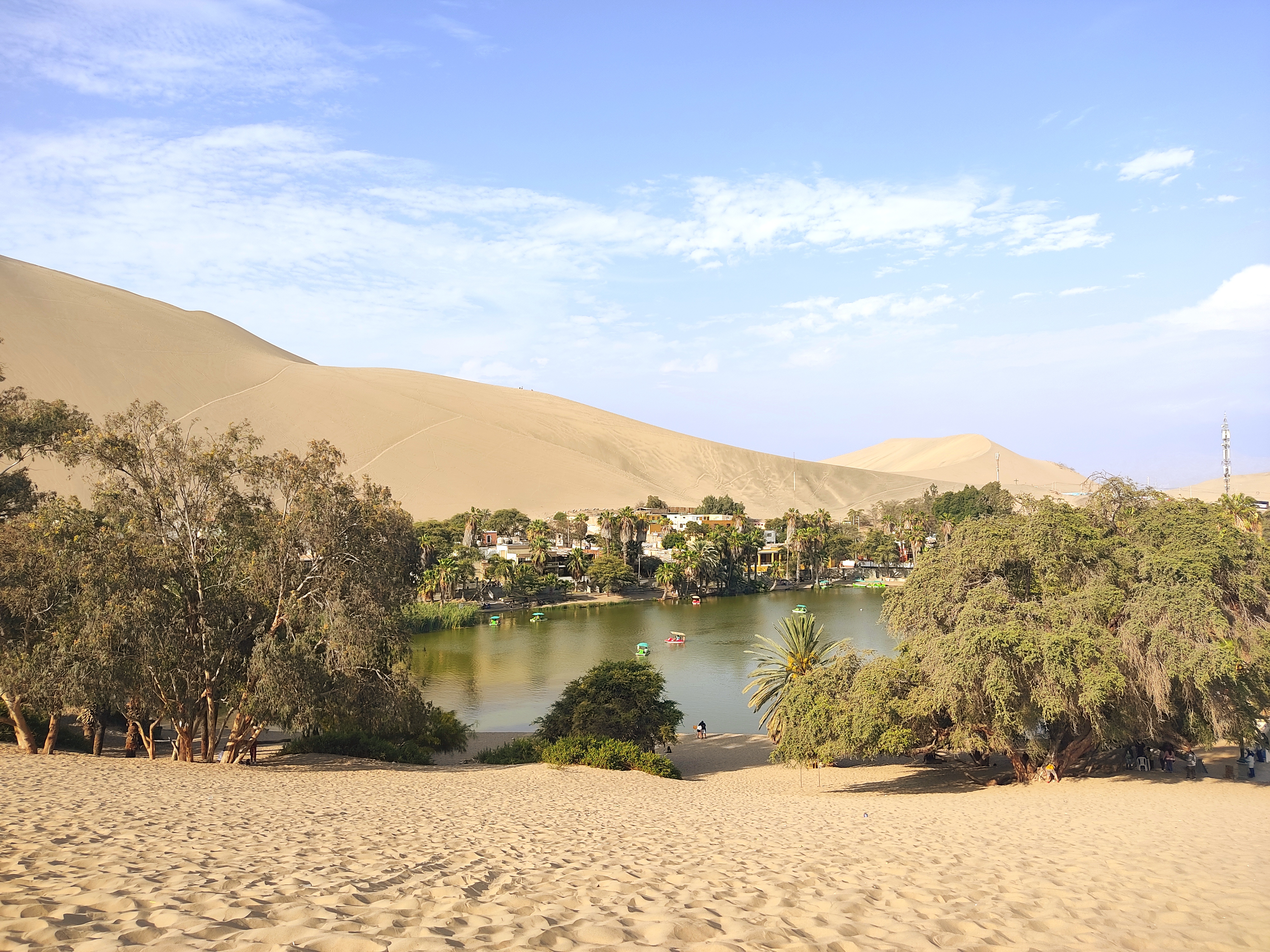
The city of Ica is a short drive from Paracas, nestled between the monstrous sand dunes of the Atacama desert. Here, you can find the Huacachina Oasis - a surreal natural lake in the middle of the desert. Once a well-kept secret, now locals flock here at the weekends to enjoy the wonderful sights, and the road is lined with hostels and restaurants targeting the crowds of foreign tourists. Fortunately, a tough trudge up to the top of the neighbouring sand dunesBe careful! In the mornings, the sun shines onto the sand, making it incredibly hot. Although going up was fine, trying to walk down the dunes whilst sinking into scorched sand isn't fun, as we soon found out. provides a quiet and peaceful view of the entire lake and the endless sand. The higher you are willing to climb, the less busy it will get!
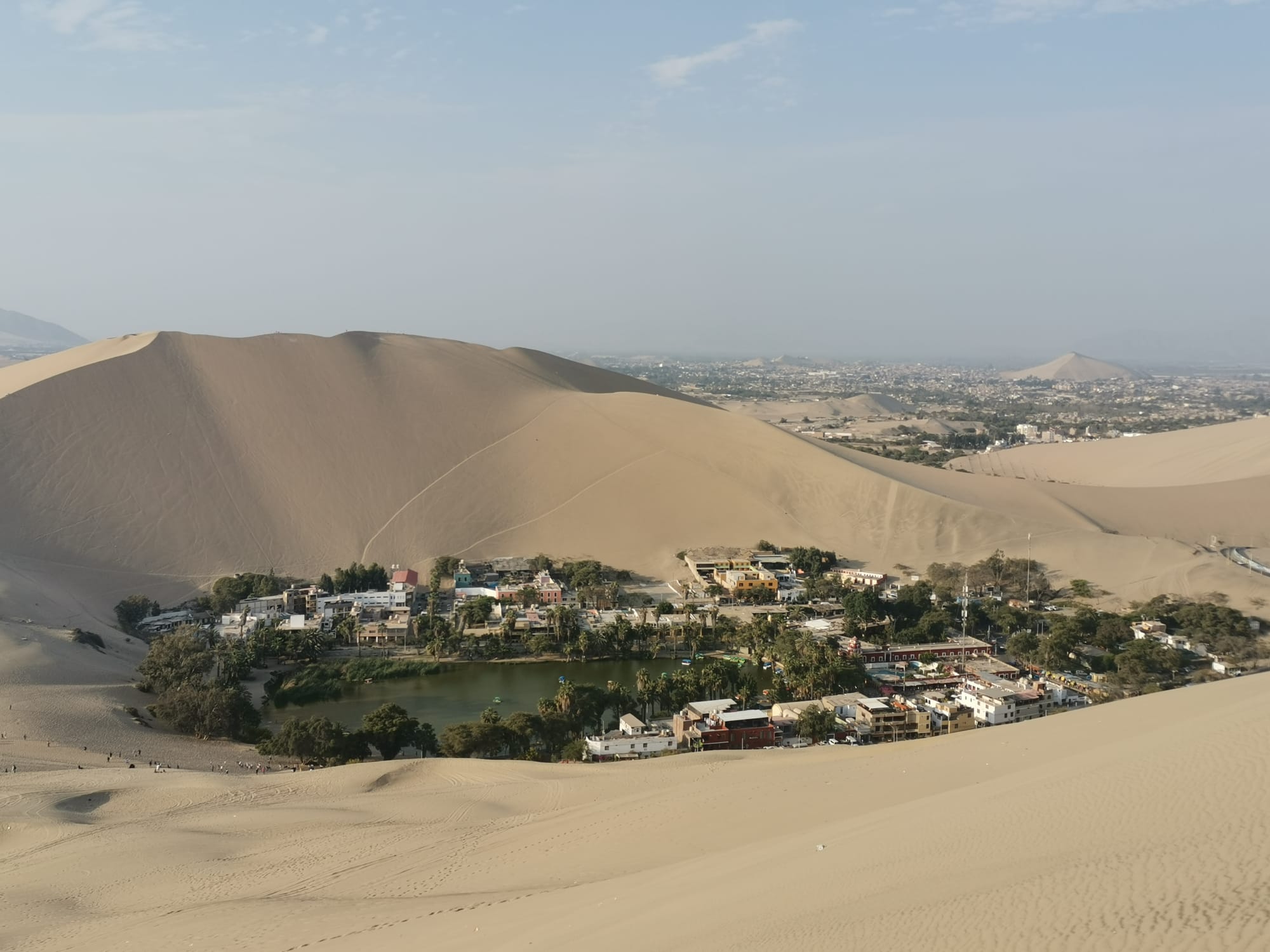
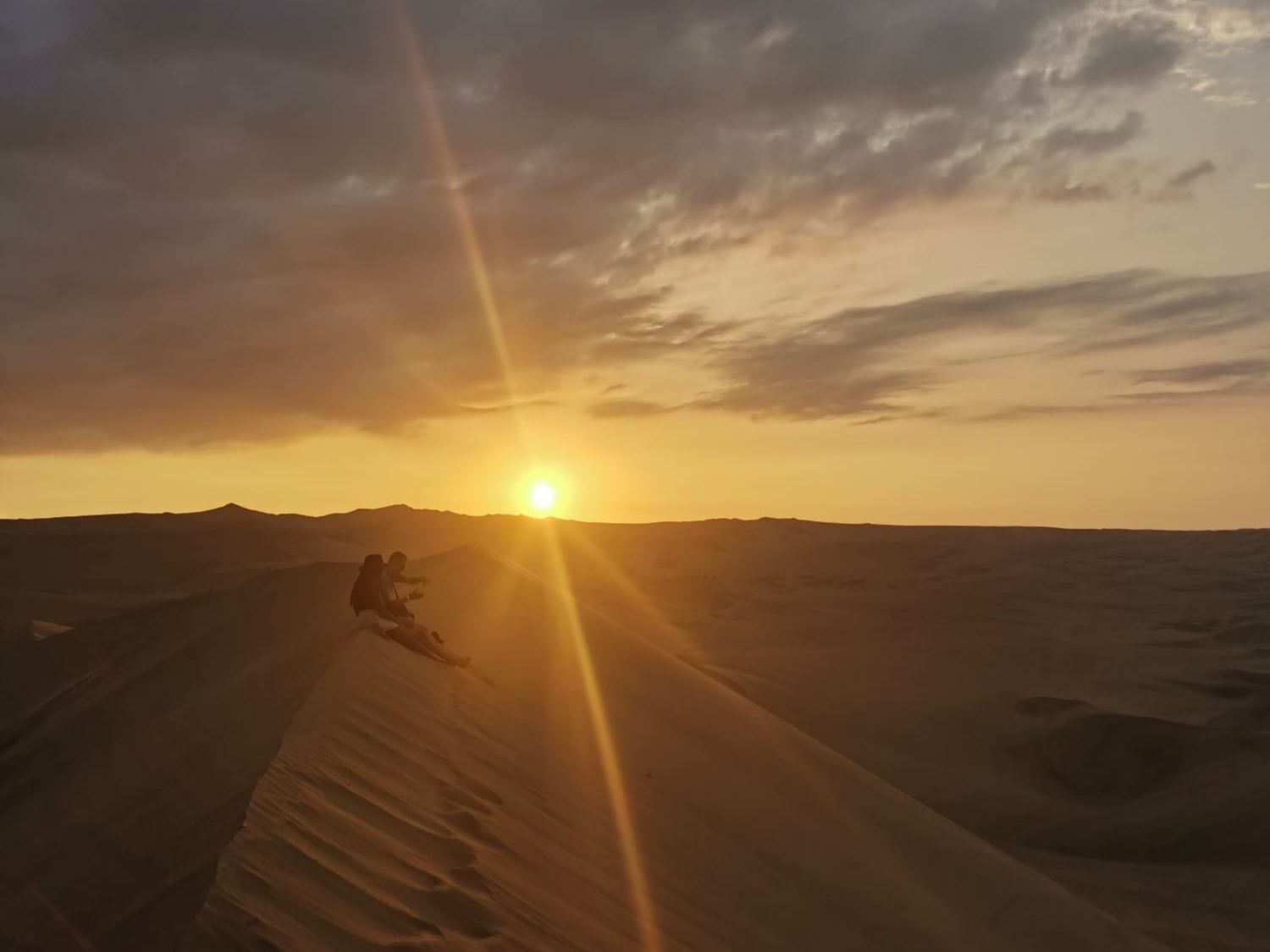
Like Paracas, this natural phenomenom is quickly becoming a tourist hotspot; you won't find a market or local street food here (another reason why spending a few days in Lima is recommended). The only small corner shop opens late and closes early, as we found out one evening on a hungry search for some cheap dinner. Thankfully, there are plenty of reasonably priced restaurants with good vegetarian and vegan options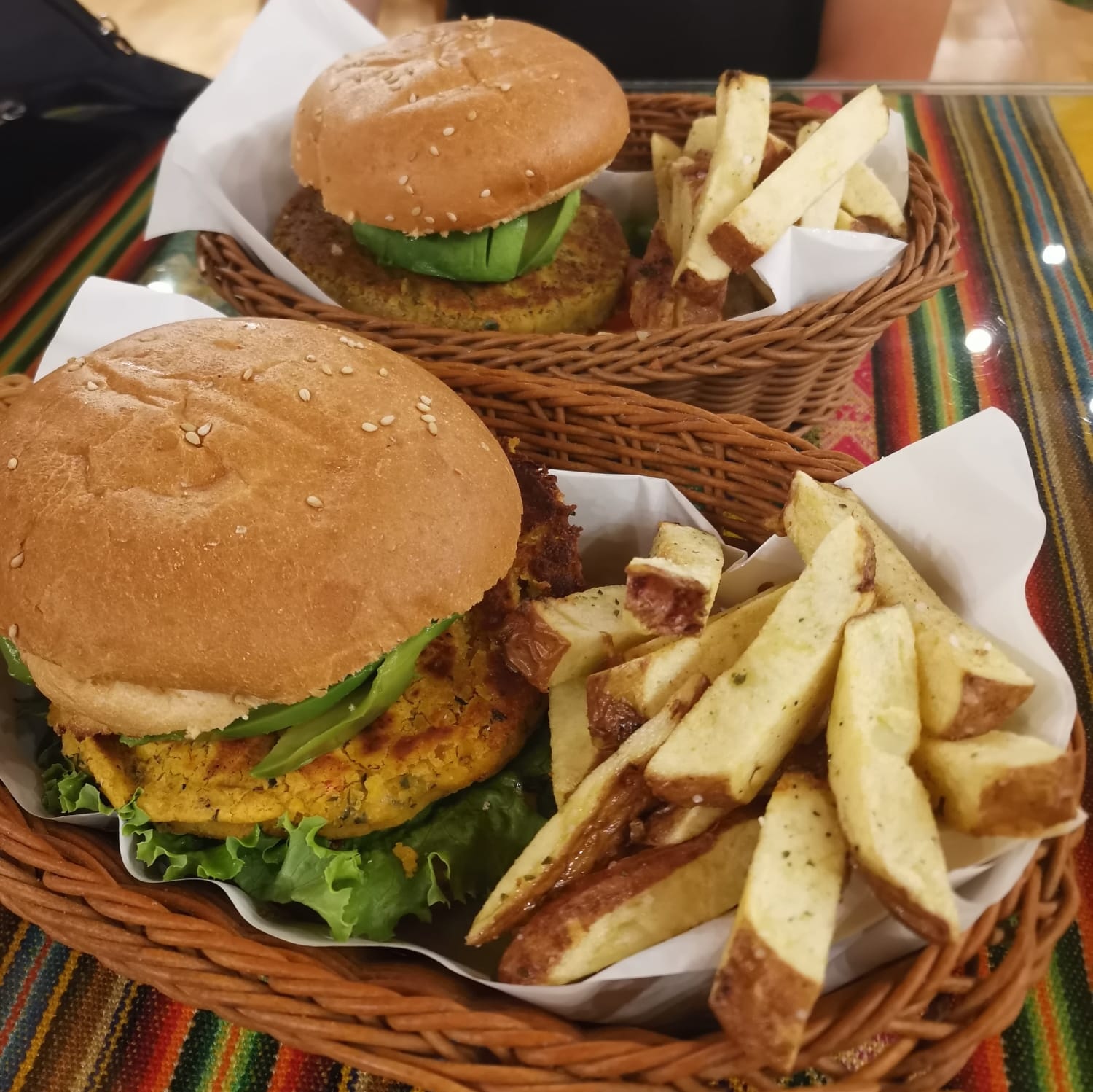 We found a quiet hostel that was doing a deal: 2 burgers for 35 soles (~£7). Our lentil burger and quinoa burger were delicious, and the portions were suprisingly large too!. Apparently, a few years back the oasis was surrounded only by sand, and not restaurants and hostels, so although they were convenient, we couldn't help but wonder what the place would be like without all these amenities.
We found a quiet hostel that was doing a deal: 2 burgers for 35 soles (~£7). Our lentil burger and quinoa burger were delicious, and the portions were suprisingly large too!. Apparently, a few years back the oasis was surrounded only by sand, and not restaurants and hostels, so although they were convenient, we couldn't help but wonder what the place would be like without all these amenities.
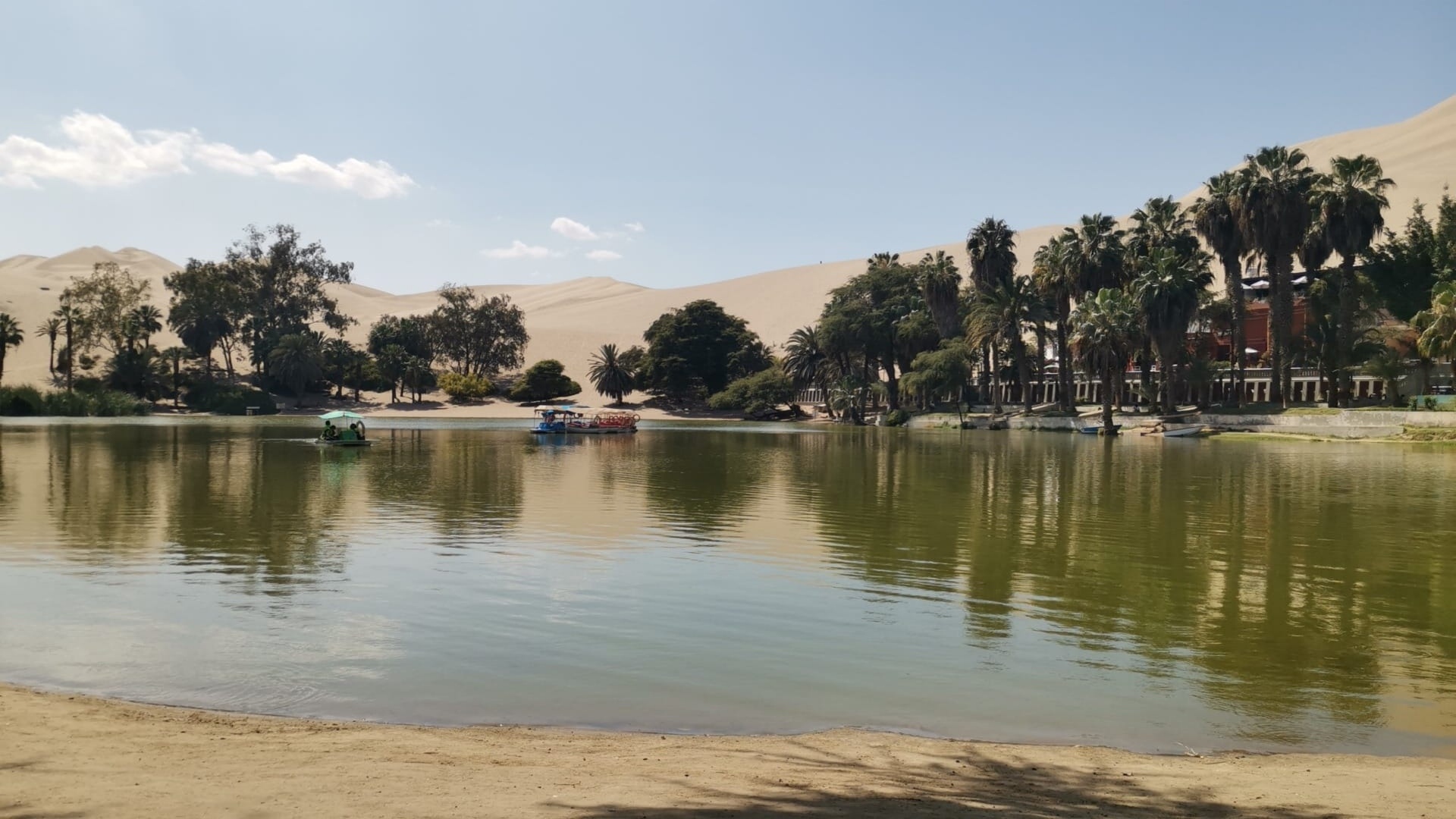
Despite its touristy reputation, on the monday morning (after the locals had left and before the tour groups arrived in the afternoon), Huacachina felt desertedWe were travelling at the end of October, which is the low season, so it might have been less busy than other times of the year.. We enjoyed a peaceful morning with the oasis practically all to ourselves, before heading out on one of the more daring activities on offer - sandboarding. After struggling up the dunes on foot the previous day, we were grateful to have a dune buggy and driver to take us around the endless sand on this tour. Our driver seamed to see the desert as a huge playground, taking us down near-vertical drops, over high-speed jumps, and drifting between the other parked buggies with milimetres to spare. Everyone was screaming, except the driver who was ominously chuckling to himself, but we made it in one piece. After a moment to enjoy the breathtaking view from the top, we laid down on sandboards and were sent whizzing down the sand face first. Each successive dune got bigger and faster than the previous, until eventually we couldn't see the bottom of the dunes from the top. In total, we got about 10 runs down the dunes, and although there were a few crashes and wipe-outs in our group, everyone loved it. It was a truly unique experience, although we both agreed the dune buggy ride was far more terrifying than the sand boarding.
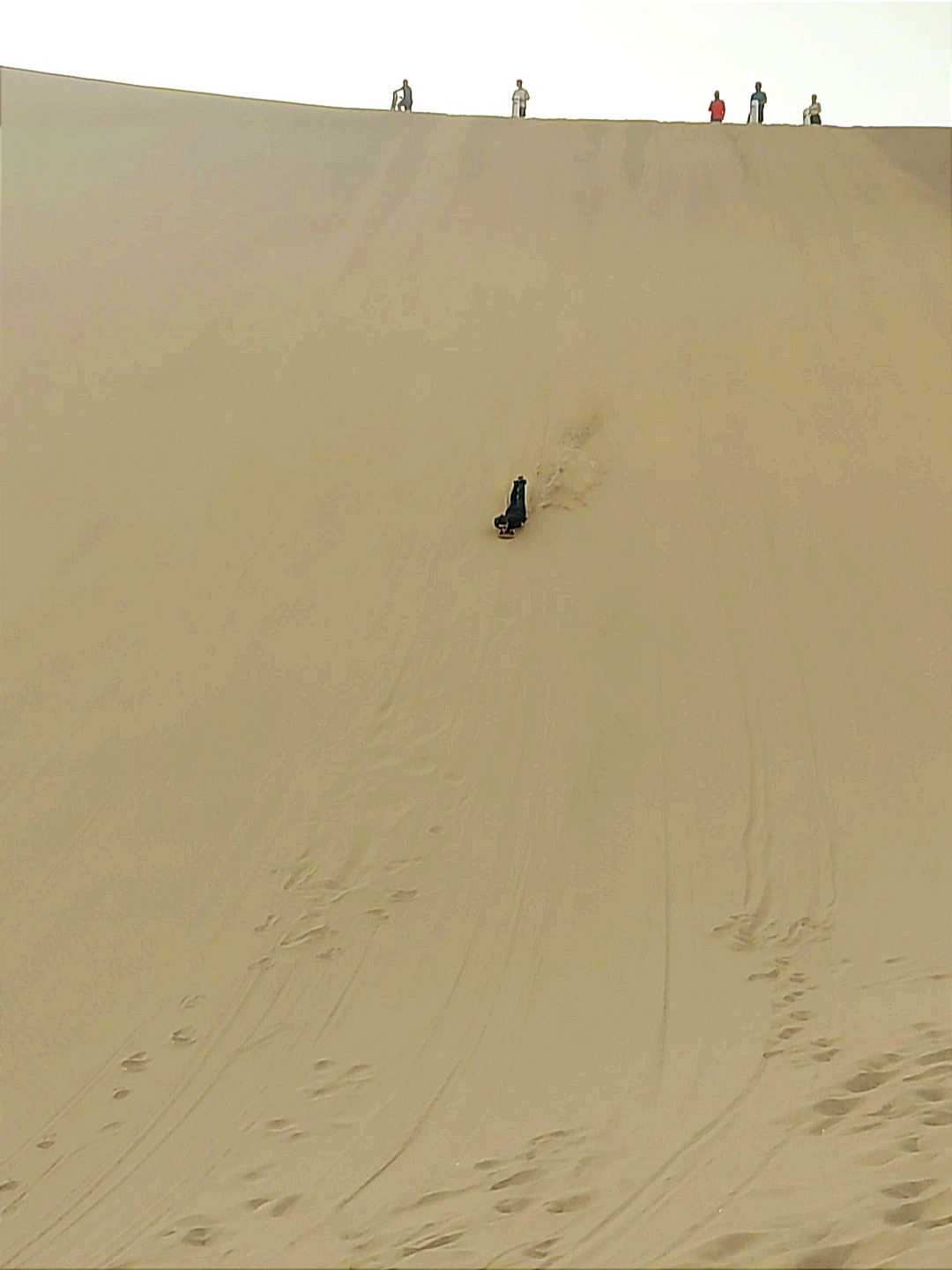
Huacachina was an amazing place to relax and take in this rare environment, and although the town can get busy, there is endless space on the sand dunes to explore and find a quiet spot.
Nasca
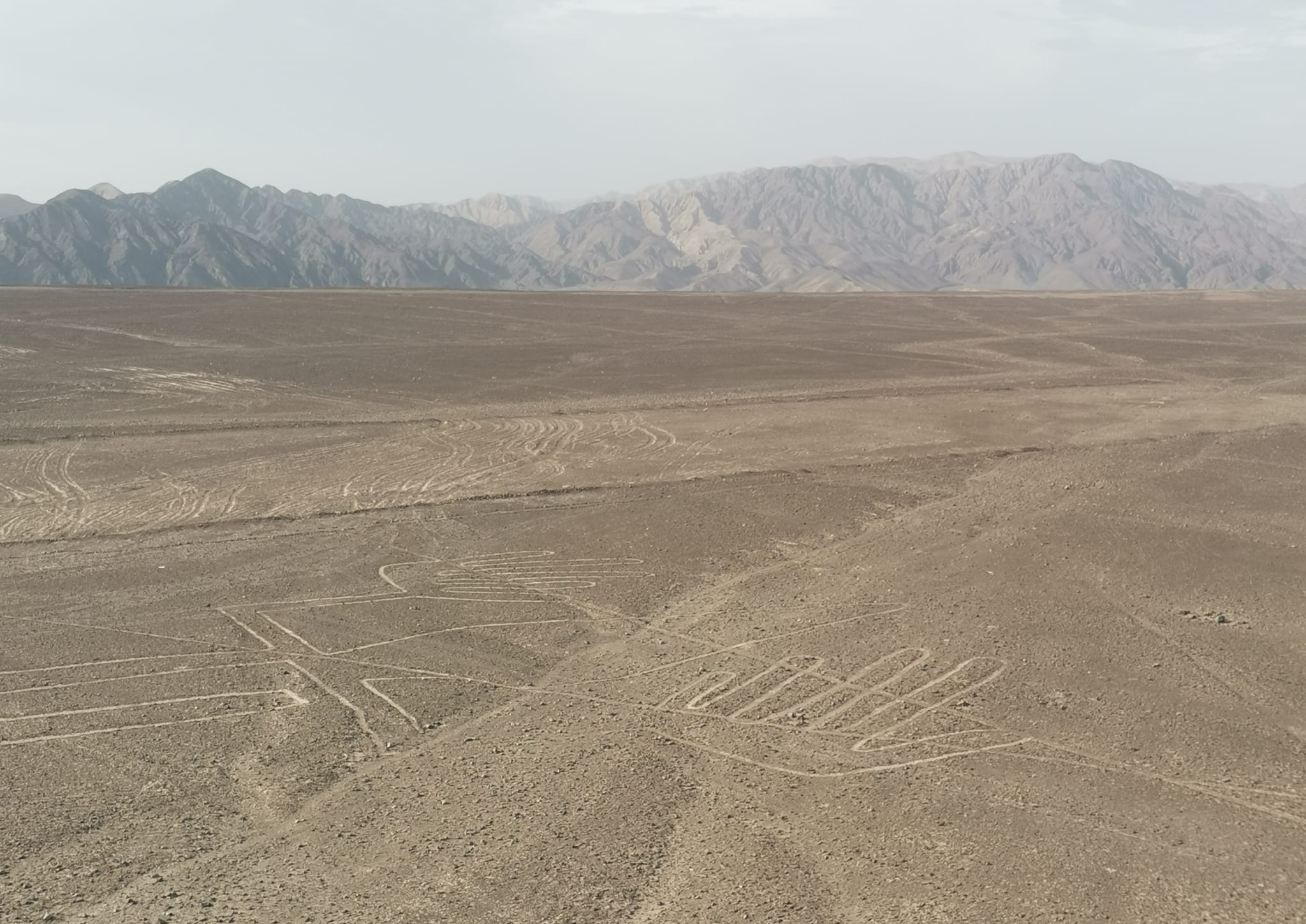
Continuing south, the next point of interest is Nasca, about 3 hours from Huacachina. This town is famous for the Nasca line geoglyphs dotted throughout the desert. These lines were constructed by the Nasca culture over 2000 years ago, and due to the dry desert climate and the alignment of the lines to the prevailing wind, they remain visible to this day. To see all of the lines, a bird's-eye-view is best, which can be achieved on an aeroplane tour. However, a much cheaper (and safer) option is to climb the watchtower by the side of the Pan-American highway, although this only provides a view of three of the geoglyphs. We only went up the watchtower, and found the lines quite underwhelming, being much smaller and more shallow than we expected. Personally, we don't think the price of an aeroplane tour is worth it, unless you are really into archaeology. The best thing about visiting them is the clout and being able to tell all your friends and family that you have been to this famous site (unfortunately, they don't give out medals). Although there are several theories, including religious, astronomical, and agricultural arguments, no-one really knows why these lines were drawn over 2000 years ago, and the place is steeped in mystery.


The city of Nasca is small, with a pleasant square and friendly locals. There are a few archeological sites and museums too, for those who want to learn more about the Nasca culture. Otherwise, there isn't a lot to do here, so we only stayed one evening before continuing further South. Even our short stay was longer than most people - the majority of people on our bus did not get off at Nasca, but continued straight to Arequipa. The day we had in Nasca actually coincided with a graduation parade. The procession looped around the town several times, and the intricate costumes, loud music, and sweets flying through the air (much to the delight of the local children) felt distinctly South American, and was definitely the highlight of our short stay.
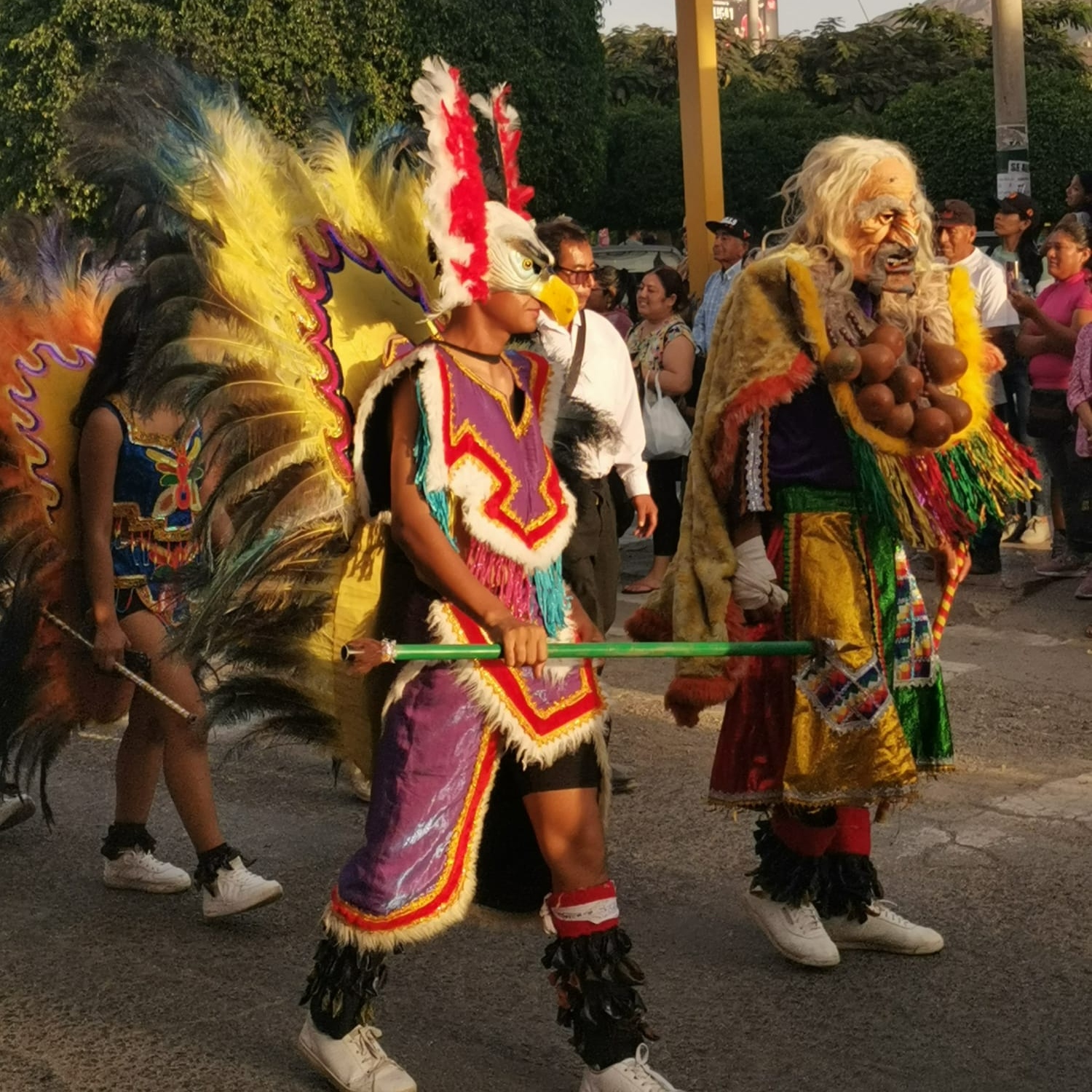
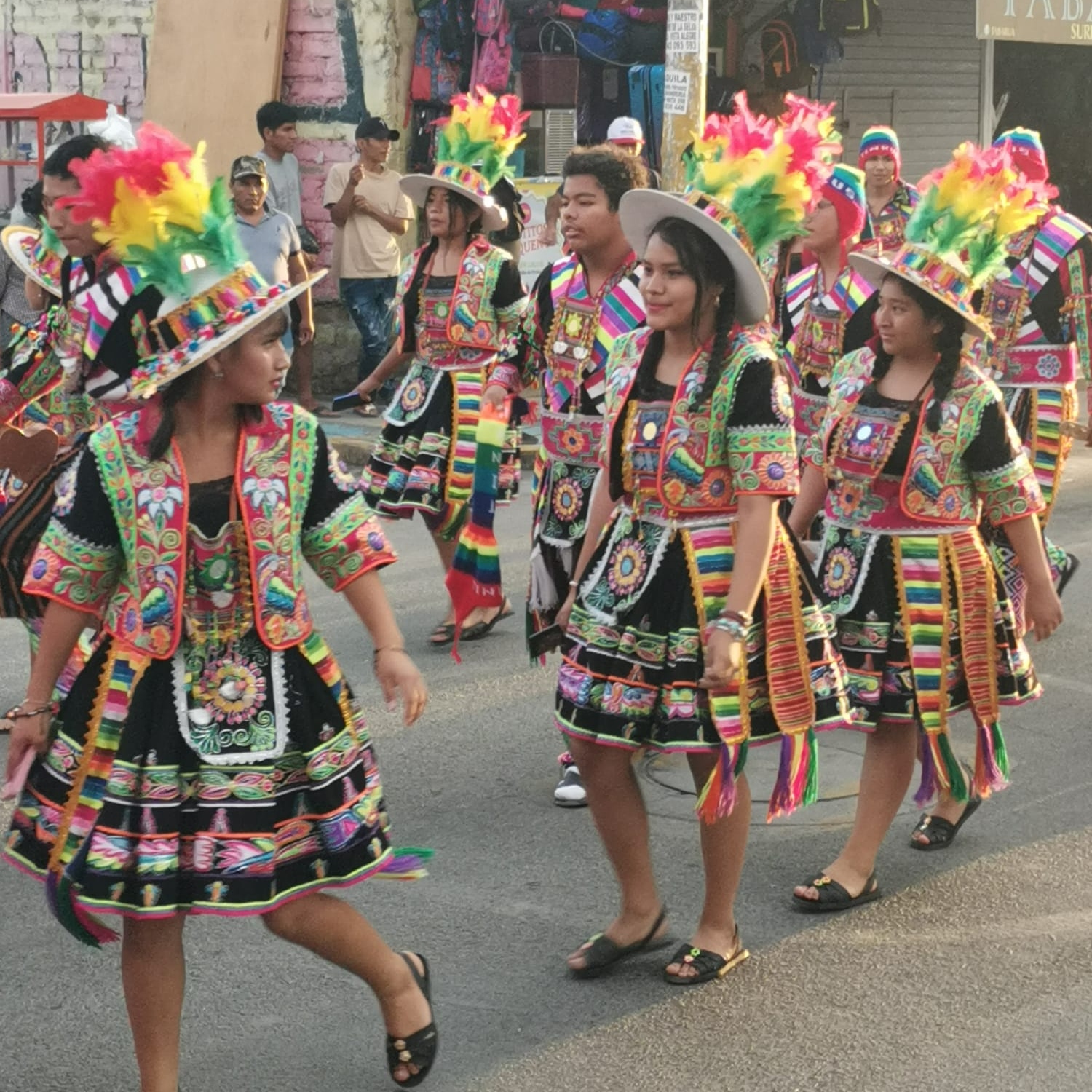
Arequipa
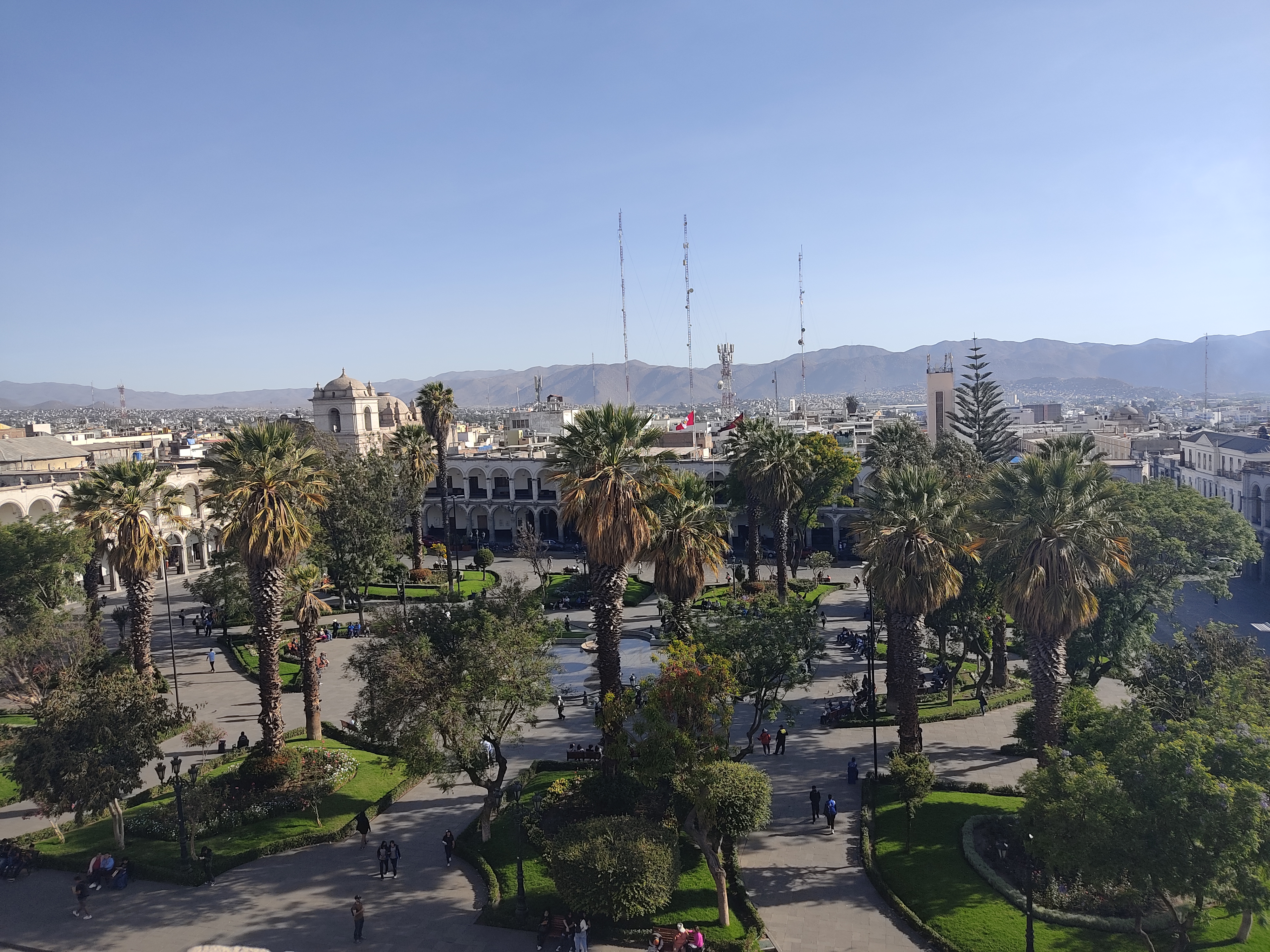
Although a long drive from Lima or Cusco, Arequipa has a reputation for being a must-visit destination in Peru. After spending just over a week there, we could easily see why. Despite its popularity, Arequipa was not nearly as touristy as Paracas and Huacachina. It is the second largest city in Peru, and certainly feels like a 'real' city, with local Peruvians going about their day-to-day lives, and not a place solely dedicated to tourism. Arequipa has a beautiful Plaza de Armas, and a cathedral which offers the opportunity to climb to the roofCathedral view 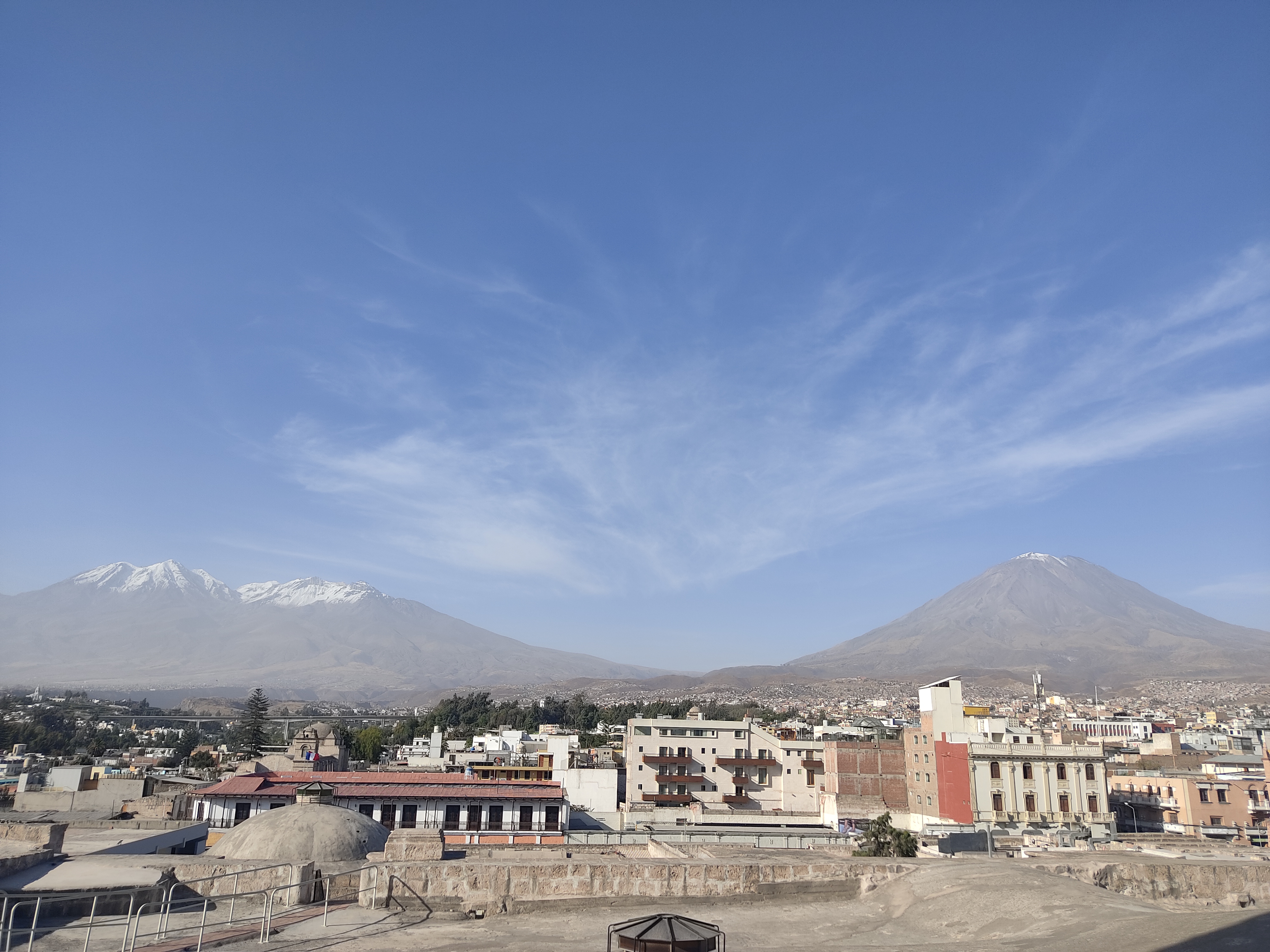 The roof is only accessible via a tour of the cathedral and museum. Ideal for people who are interested in these things, however for us it was 20 minutes of smiling and nodding politely, before we finally got to the roof for the amazing view. for incredible views of the city. There are also many colonial houses which are now open to the public, where you can marvel at the architecture or sit and relax.
The roof is only accessible via a tour of the cathedral and museum. Ideal for people who are interested in these things, however for us it was 20 minutes of smiling and nodding politely, before we finally got to the roof for the amazing view. for incredible views of the city. There are also many colonial houses which are now open to the public, where you can marvel at the architecture or sit and relax.
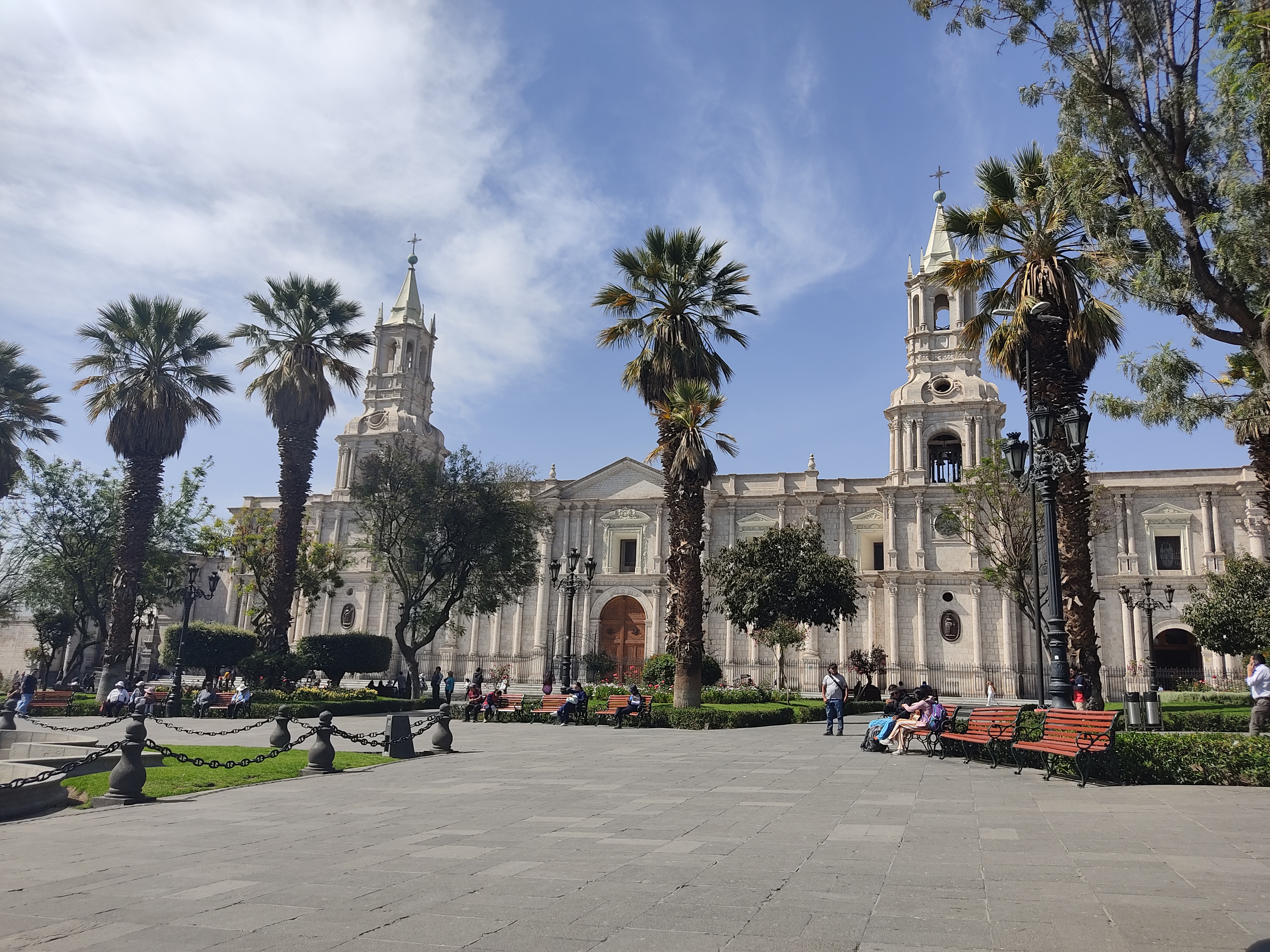
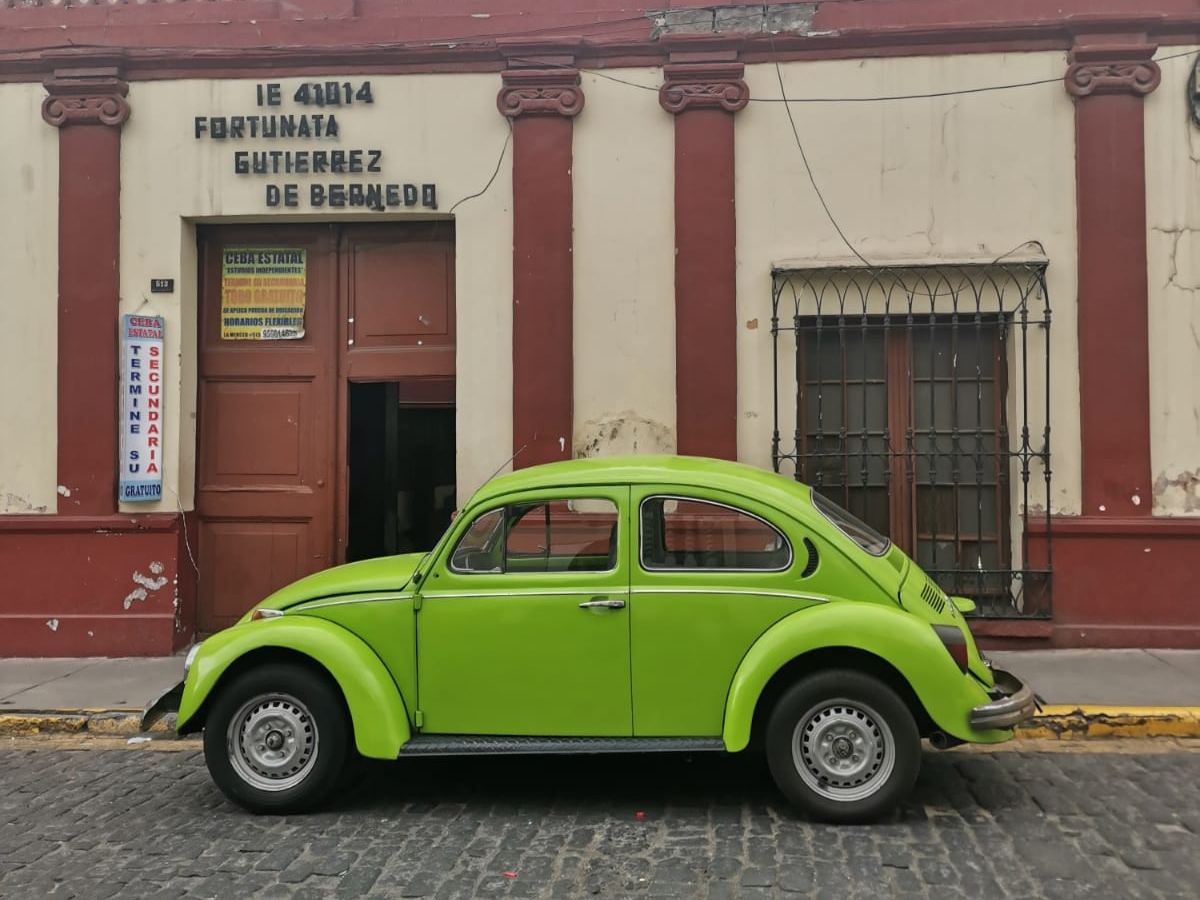

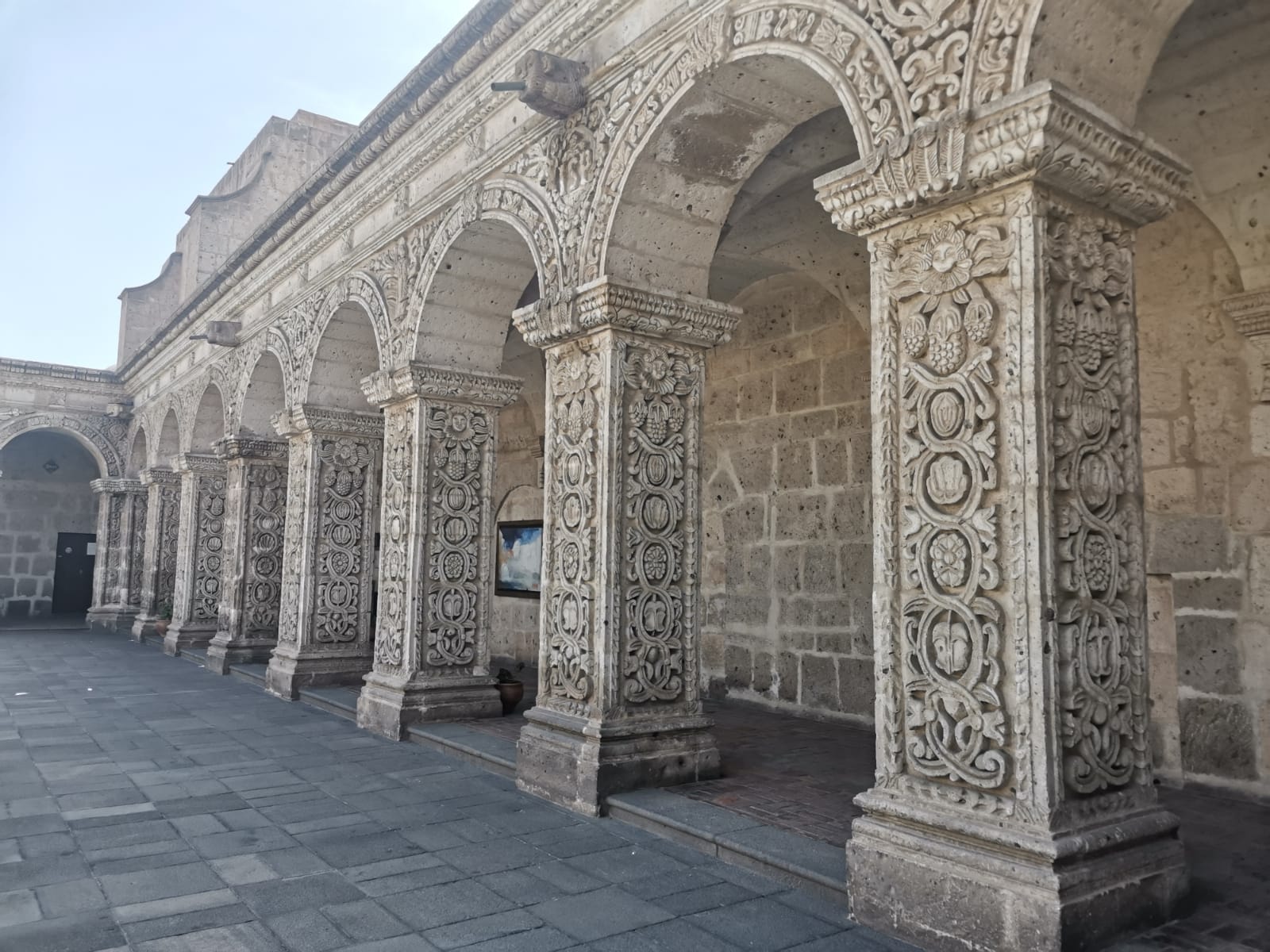
Additionally, the monastery of Santa Catalina, which is often described as a city within a city, offers some colourful spots for photos, with narrow streets filled with bright flowers. You could easily spend hours walking around the peaceful grounds.
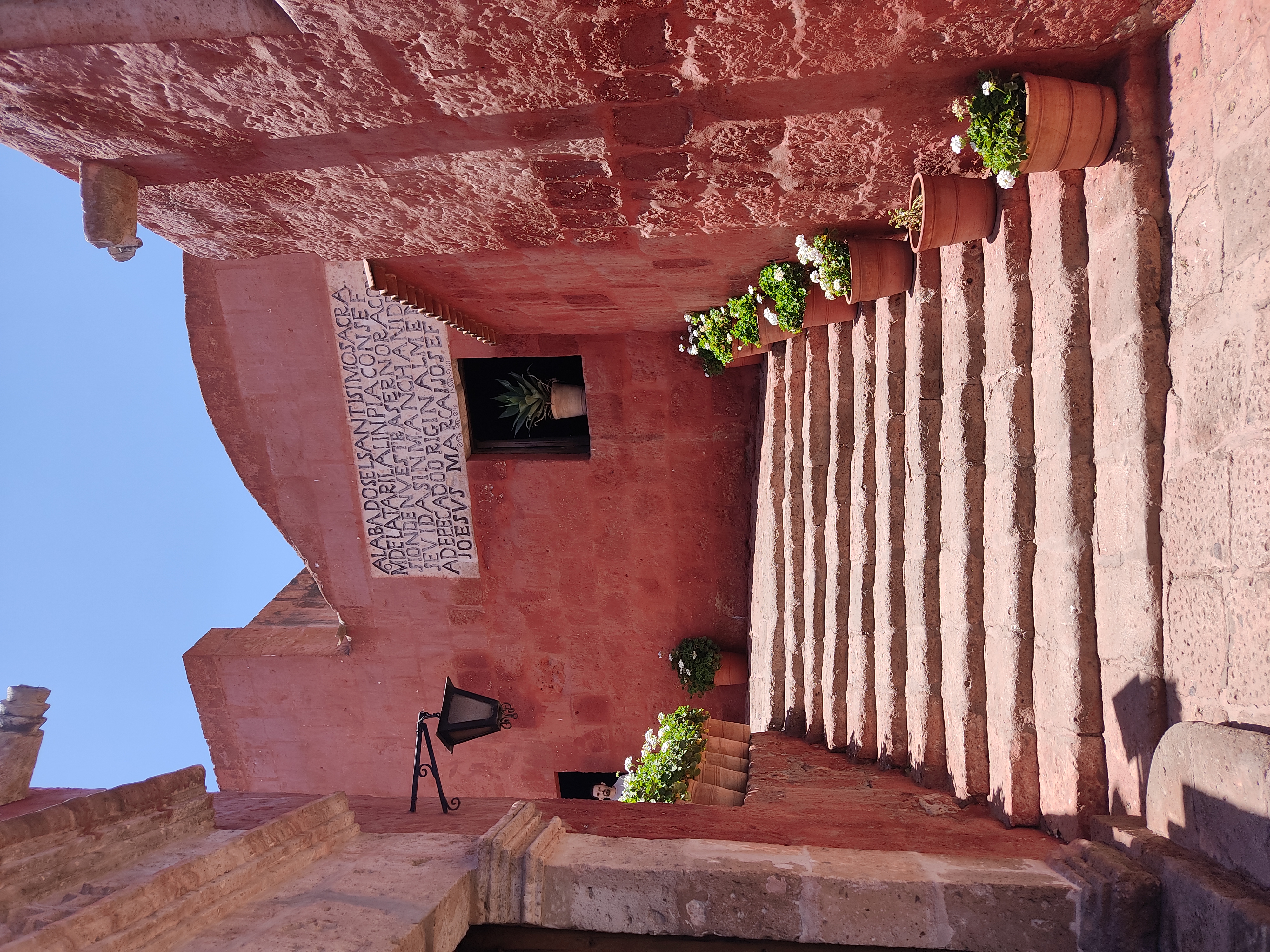
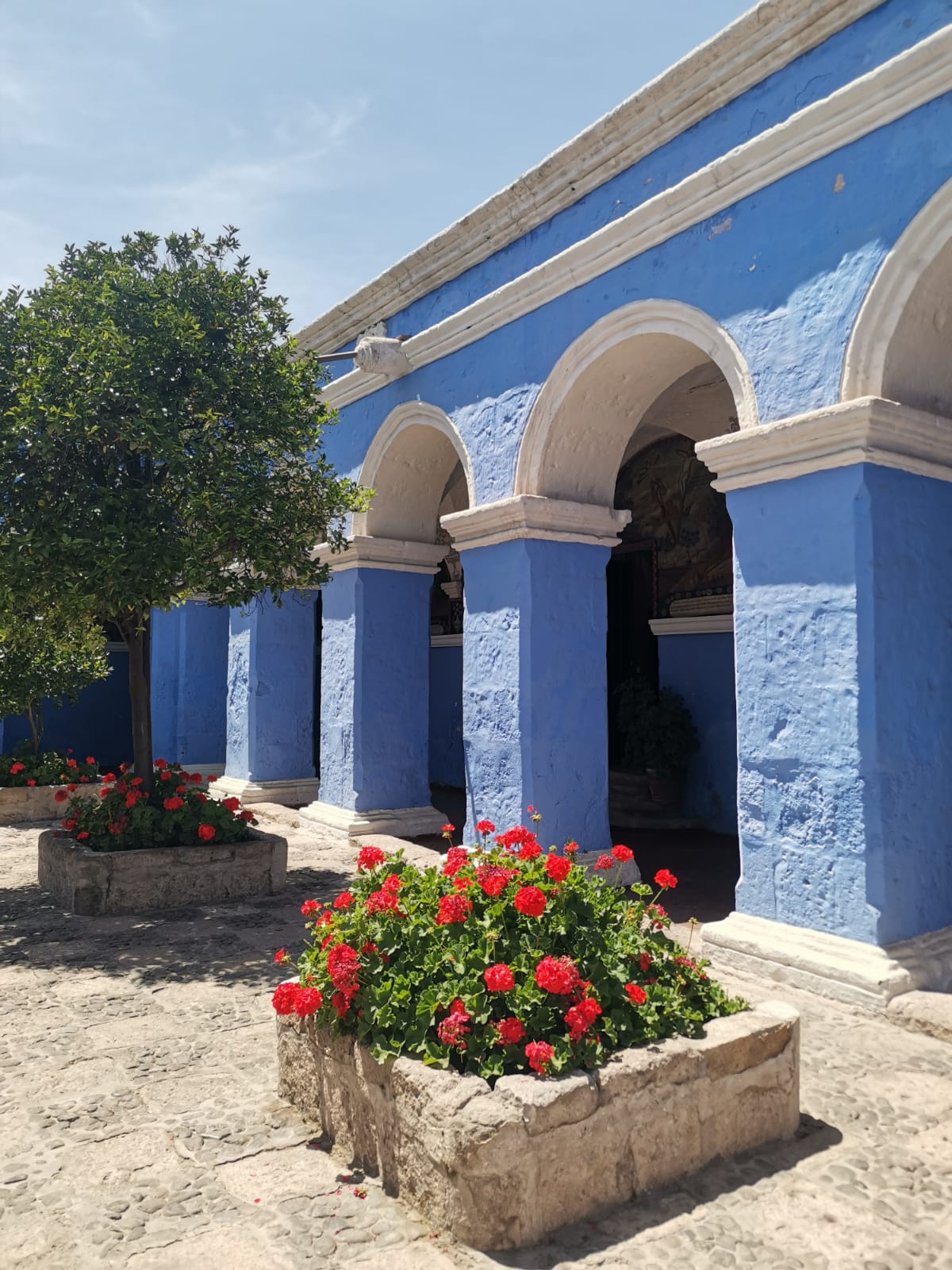
What makes Arequipa so photogenic, besides its architecture and colourful buildings, is the backdrop.
The city is surrounded by three volcanoes (Chachani, El Misti, and Picchupicchu), whose snow-capped peaks**The volcanoes are covered in snow during the rainy season (November-April), however there is only a small amount visible during the dry season. El Misti was snowy when we arrived, but after one particularly hot day, it had unfortunately melted away and did not return for the remainder of our stay (how inconsiderate of mother nature). stand tall over the city. From most places in the city, these volcanoes can be seen looming on the horizon. There are also a few miradorsMiradors, such as Yanahuana and Cayman Alto, are dedicated viewpoints. They can get busy with tourists, but provide unbeatable views and are a good place to relax with a cold drink., which provide breathtaking views of the city and the volcanoes. The volcanoes were historically important, as sacred sites where the Incas made human sacrifices - one particularly well-preserved mummy is now kept in the city's museum. With incredible architecture and a dramatic location, Arequipa really is like no other place on Earth.

As well as its stunning scenery, Arequipa is known to provide some of the best food in Peru, with some very highly-rated restaurants and various cuisines on offer. However, travelling on a budget meant we were drawn to the amazing street food and markets, where the 1 million locals shop at. The best place for local food is San Camillo market, where we went almost every day to buy fresh bread, fruit, vegetables, street food (such as empanadas and papa rellenas). There are also plenty of stalls which will make fresh smoothies to order, with whatever fruit you can name. All this, for a cheap price, meant we didn't have to miss out on indulging in the incredible food on offer in Arequipa. As well as the market, there are plenty of street vendors pushing their carts of food around the city. A local speciality is queso heladosQueso helado translates to cheese icecream! Thankfully, it does not contain any cheese, and got its name because it looks like cheese. It is much lighter than traditional ice cream, and usually has a slight cinnamon flavour., which can be bought from wagons on virtually every street. Despite its unappetising name, this was actually a delicious and refreshing treat.
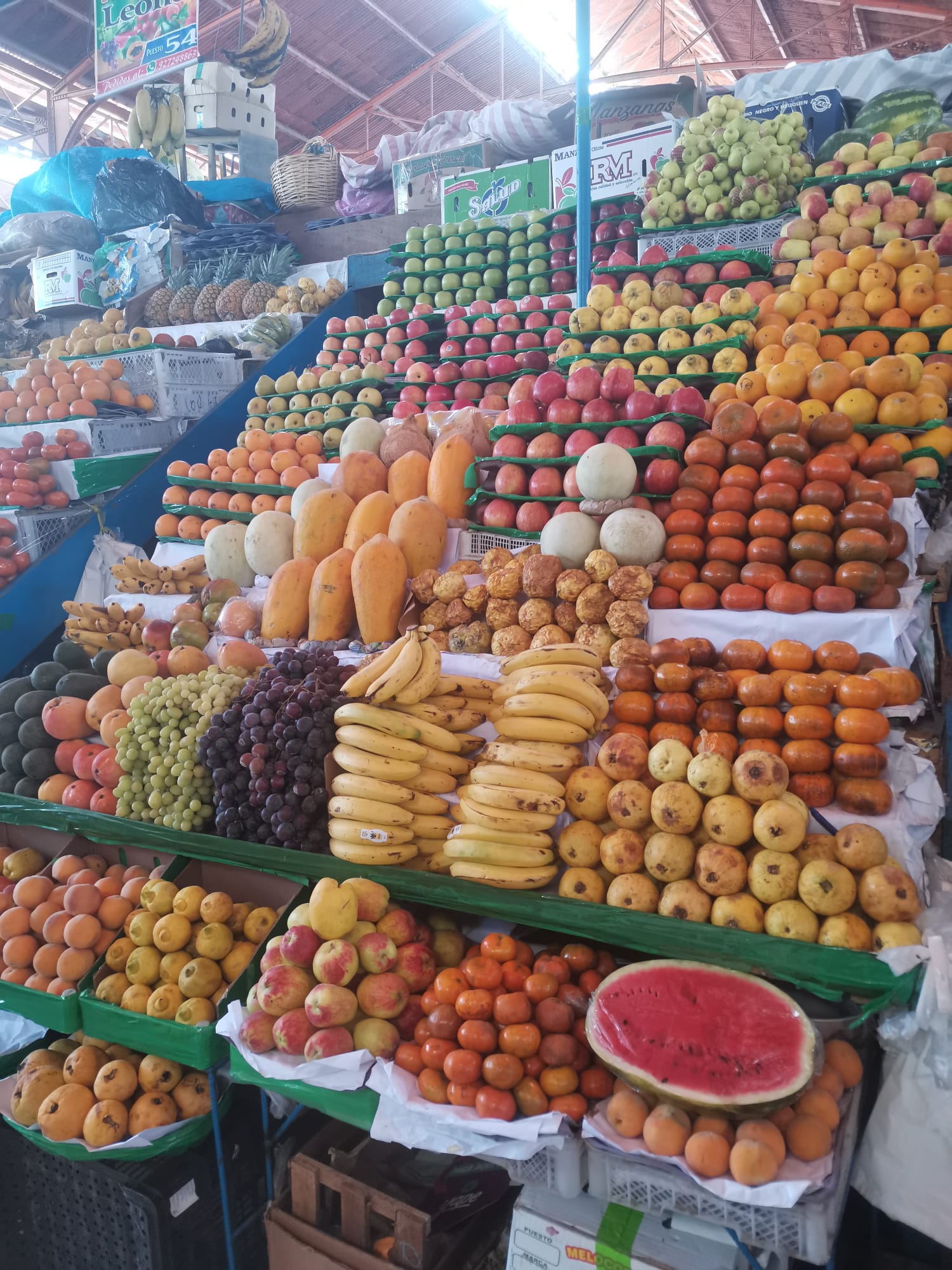
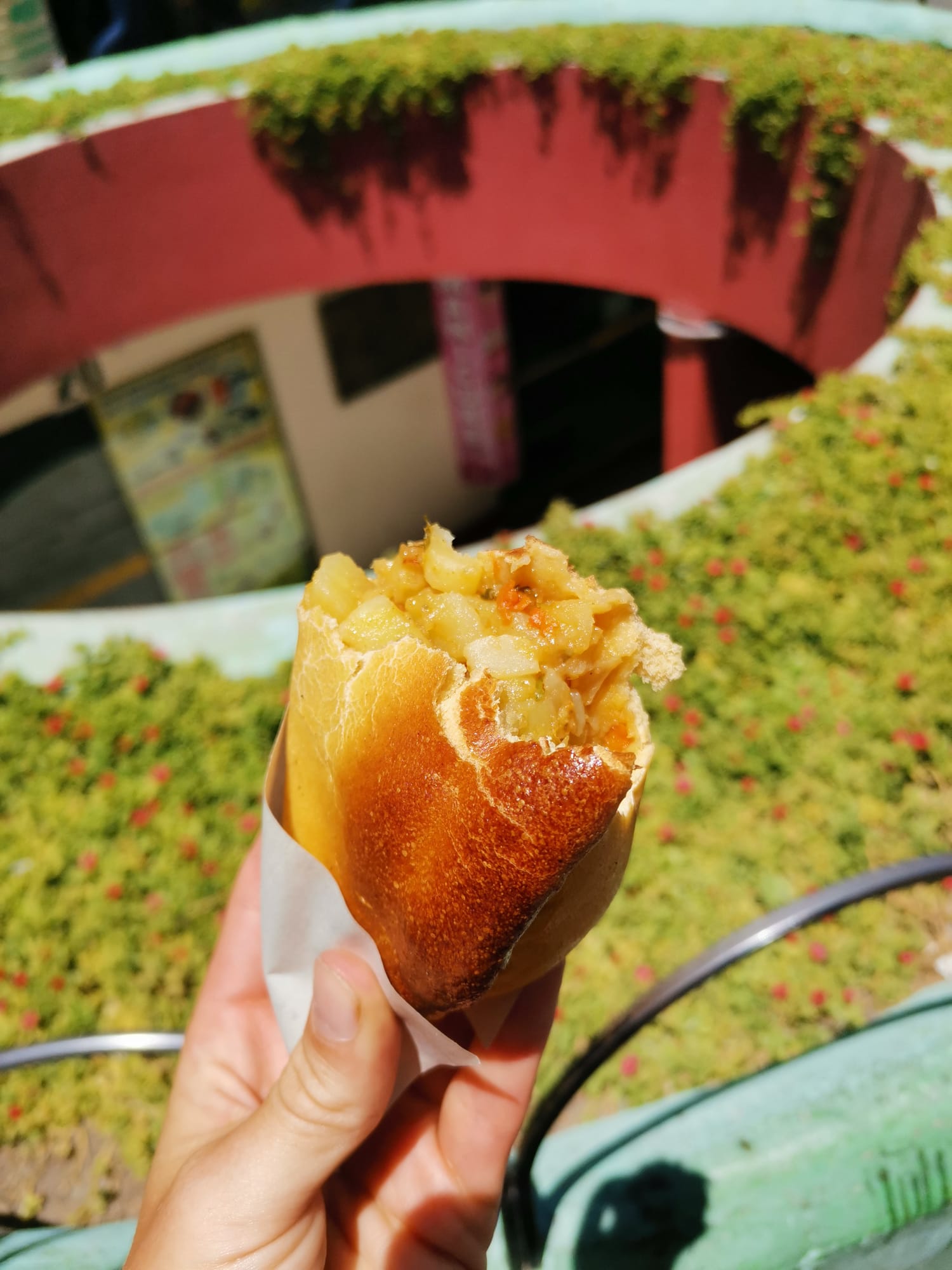
After a relaxing few days exploring the city, we took an adventurous change of tempo and went rafting down the Rio Chilli. I can't say we were particularly good at it (our instructor had to get us un-stuck from the rocks a few times, and I nearly went overboard more times than I can count), but it was a great way to cool off from the midday sun and the rapids are challenging, but doable for beginners. As well as rafting, Arequipa has another popular outdoor activity - hiking the Colca Canyon. If you are wondering how to visit the Colca Canyon, then read our post which goes through our time there.
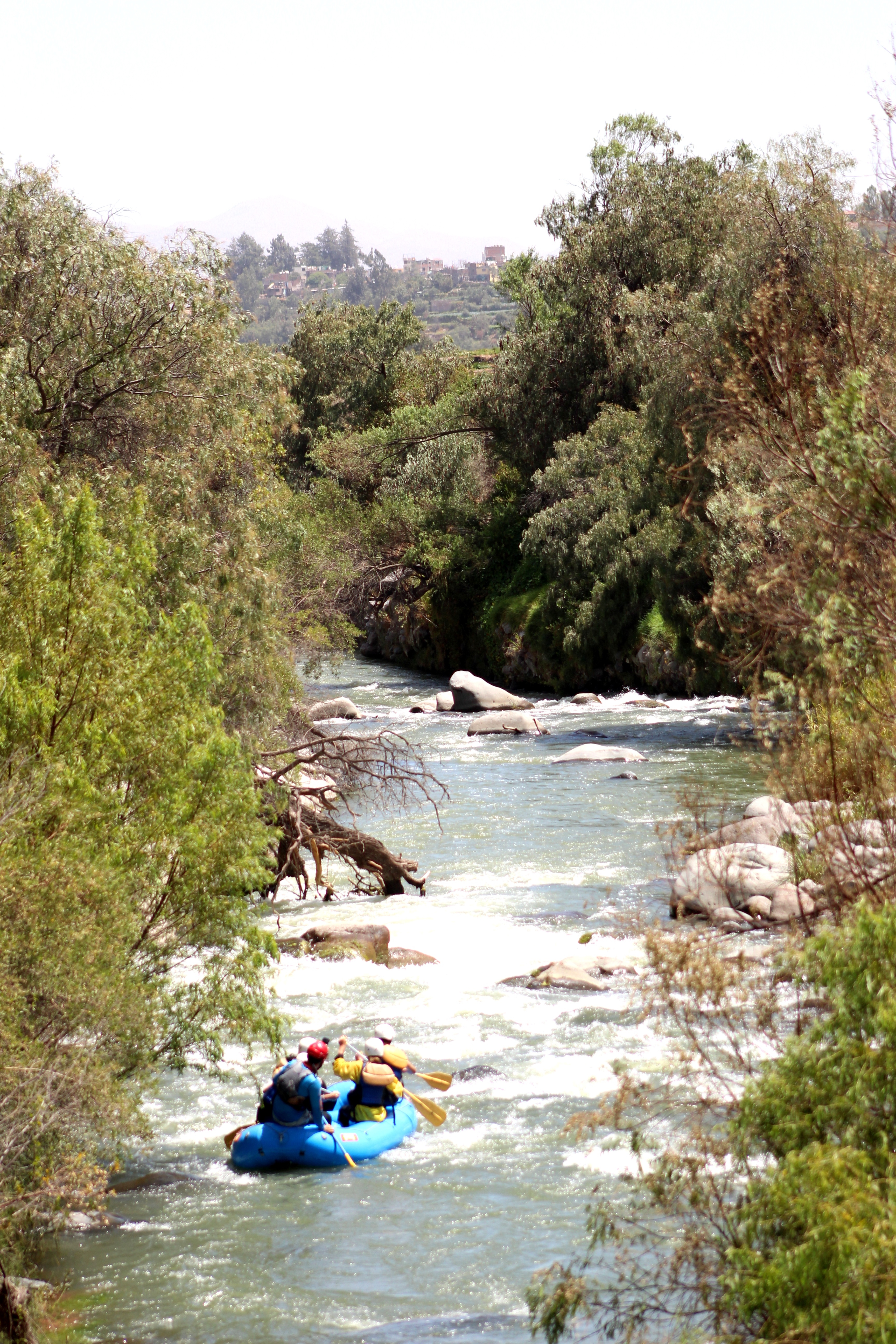
Hopefully, it is not hard to see that we would recommend a visit to Arequipa to anyone, but just in case you needed another reason to visit, Arequipa is the best place to acclimatise to the high altitudes of South America. Altitude sickness is a common problem in Peru, especially for tourists who go directly to Cusco, at 3300m above sea level. Usually, altitude sickness occurs when travelling from low altitudes to elevations above 2,500m. However, Arequipa is situated 2,300m above sea level ( just below the threshold for high risk of altitude sickness), so spending a few days in Arequipa is the perfect way to acclimatise to being at altitude, before visiting the much higher places like Cusco and lake Titicaca.
Overview
As well as its World-famous attractions, Peru has so many 'hidden gems'. Many of these are now becoming incredibly popular with tourists, however Peru offers such a range of things to see and do if you take the slow route from Lima to Cusco.
As a side-note, it might also be worth visiting Puno on Lake Titicaca before Cusco, but since we continued to Bolivia, we left this stop until last. To see where these places are located in relation to Lima and Cuscco, check out our Route through Peru.

